Exhibitions – Media, Games, Networks
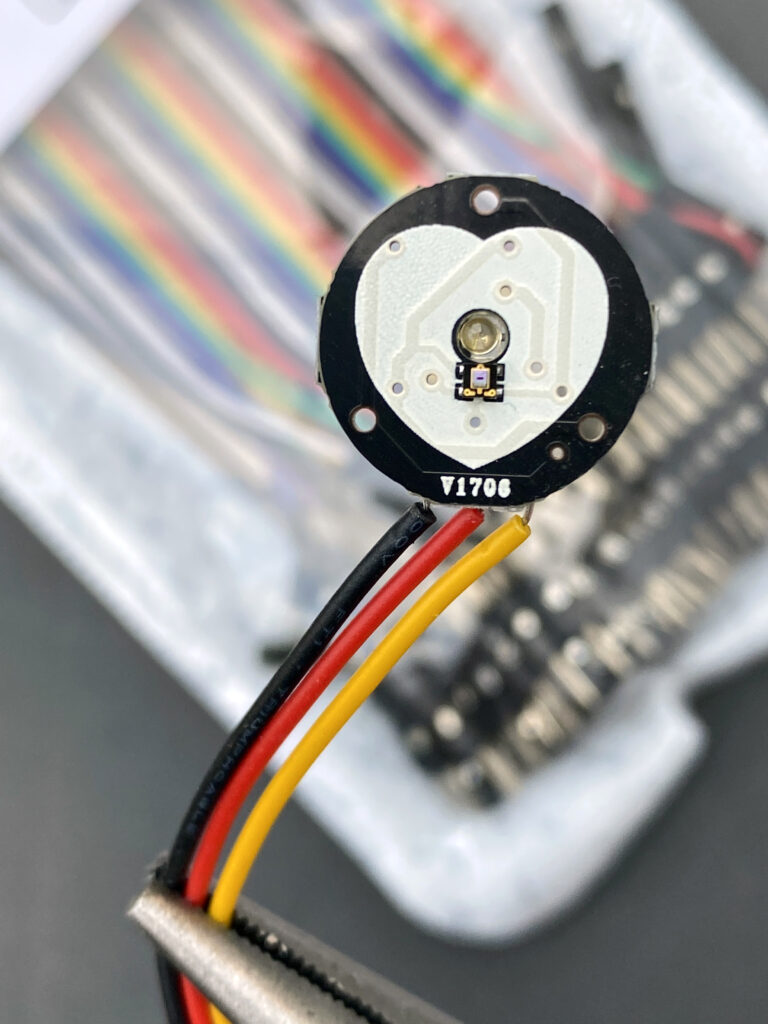
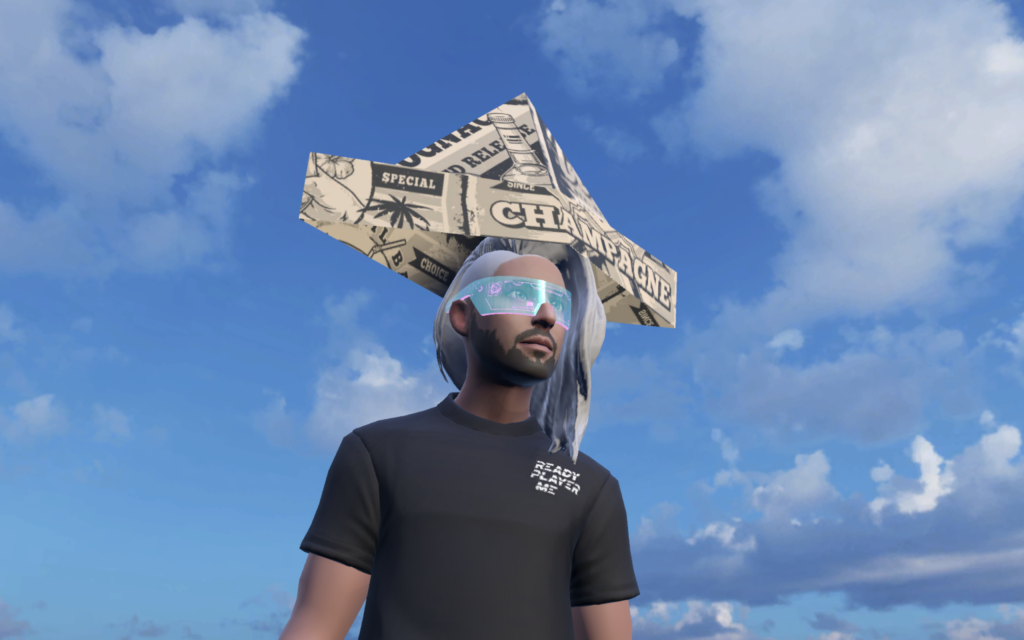
Selected Exhibitions
- Plug and Play. Semper Depot, Vienna, Austria (2025)
- Surrealist Symphony, Cyberia XR -39 Whitfield Street. Spatial.io (online) (2025)
- Roböxotica – Festival of Cocktail Robotics, Kunsttankstelle Ottakring, Vienna, Austria (2023)
- Ars Electronica 2019 – Out of the Box: The Midlife Crisis of the Digital Revolution. Linz, Austria (2019)
- Transient Hole (Variations) VII, Zentrale, Vienna, Austria (2017)
- Cyberpills for Mental Health, Center for Urban History of East-Central Europe, L’viv, Ukraine (2014)
- Crossbreeds – Time:flows. Im_flieger – Platform and Experimental Ground for Dance. Vienna, Austria (2014)
- Future Horizon: soirée fractal future, TQW, Tanzquartier Wien – Centre for Contemporary Choreography and Performance, Vienna, Austria (2014)
- Radio Revolution, TQW, Tanzquartier Wien – Centre for Contemporary Choreography and Performance, Vienna, Austria (2013)
- Invisible Forces, Furtherfield Gallery, McKenzie Pavilion, Finsbury Park, London, England (2012)
- Games People Play, Centre for Contemporary Art and the Natural World, Haldon Forest Park, Exeter, England (2012)
- Postspectaclism – Live Art Festival, Kampnagel – Internationales Zentrum für Schönere Künste, Hamburg, Germany (2012)
- Chapayev and Void, Galereya Revolutsija, Irkutsk, Russia (2011)
- Tomorrow Never Dies – European Cultural Congress, Design Gallery, Wroclaw, Poland (2011)
- ACHROM, Cyland Media Art Lab – National Center for Contemporary Art, Kronstadt, Russia (2011)
- Transmediale 10 – FUTURITY NOW! Berlin, Germany (2010)
- Class Wargames – ‘The Game of War’, HTTP Gallery, London, England (2009)
- Cold War Modern: Design 1945-70. Victoria and Albert Museum, London, England (2008)
- World-Ex-Position, Open Space and Labfactory, Vienna, Austria (2008)
- Net Art Community Congress, Dom im Berg, Graz, Austria (2005)
- Roböxotica – Festival of Cocktail Robotics, Electric Avenue, Q21/MuseumsQuartier, Vienna, Austria (2007)
- Economy Class, Alliance Francaise – Nairobi, Kenia (2006)
- Cybertrail: the long distance howl – Graz, Austria (2005)
- freibesetzt.tk – Freiräume erkämpfen, WUK – Vienna, Austria (2005)
- Serious Pop – Aesthetic Appropriation in West-Eastern Europe, dietheater Konzerthaus, Vienna, Austria (2005)
- UPDATE. Kunststrukturen schaffen und nutzen, Künstlerhaus, Vienna, Austria (2005)
- VJ Loops – Leopold Museum, Vienna, Austria (2004)
- Bring Your Own Devices. netznetz.net, Festival of Net Culture, Künstlerhaus – Vienna, Austria (2004)
Cocktail Robotics: Where Hackers, Makers & Nerds Shake Things Up


BingeBuddy3000 – AI-Assisted Drink Recognition and Recommendation System
In a world intoxicated by the rapid advancements of artificial intelligence and machine learning, this feasibility study explores the intersection of technology, alcohol consumption, and human behaviour through a robotic art installation that invites users to ponder their interactions and choices in the digital age. BingeBuddy3000 employs cutting-edge machine learning technology, specifically Google’s Teachable Machine (TensorFlow), to recognise different types of alcoholic beverages and provides recommendations for the next drink. BingeBuddy3000 offers help when you’re too far gone to decide. The work doesn’t pass judgement but instead serves as a reminder of the potential pitfalls of over-relying on AI for assistance. Through this piece, I aim to challenge and provoke thought about the choices we make under the influence of technology.
Mark Farid’s Seeing-I: The Other (Contributor)

Being Me For 24 Hours
Mark Farid, a British artist known for his explorations of digital identity, surveillance, and the psychological effects of immersive technologies, invited me—alongside six other participants, one for each day of the week—to record 24 continuous hours of my life using a head-mounted VR camera. This contributed to his durational performance at Ars Electronica, where he subjected himself to an uninterrupted week-long immersion in these recordings, effectively living through another’s perspective.
Under the supervision of clinical psychologist Tamara Russell, the project interrogated the dissolution of self through mediated perception, pushing the boundaries of embodied simulation, cognitive dissonance, and the psychological implications of extended VR exposure. My own recording, running continuously on 24-hour battery cycles, functioned as a transgressive, hyperreal document of lived experience, exploring the thresholds of surveillance, subjectivity, and performative endurance.
Strange Encounters
Moving through campus, every step became an act of negotiation—permissions secured, boundaries tested, presence mediated by the VR gaze. Entering the faculty building, the first video shot at Ars Electronica 2019 captures the banal made uncanny: a workday reframed as surveillance, autonomy questioned, embodiment unsettled.
The Origin of Consciousness in the Breakdown of the Bicameral Mind
In the atrium, a conversation unfolds—dualism, the mind-body problem, the fractured self in VR. Filming without pause, my perspective is both subject and object, the act of seeing made visible. What does it mean to exist when perception is externalised? The screen becomes a mirror, reflecting the tension between presence and mediation.
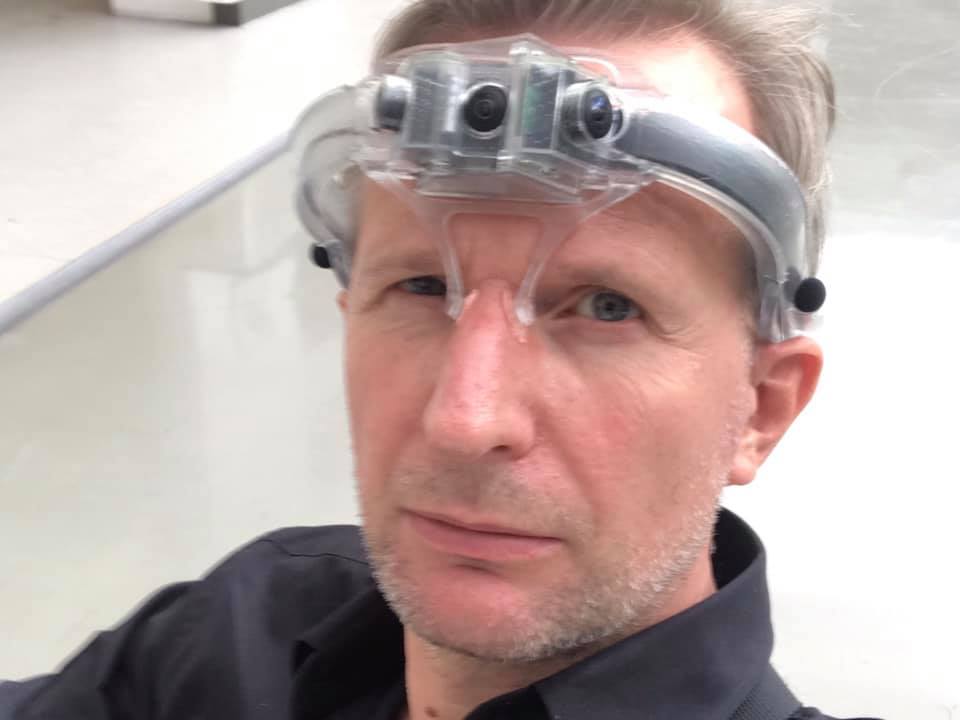
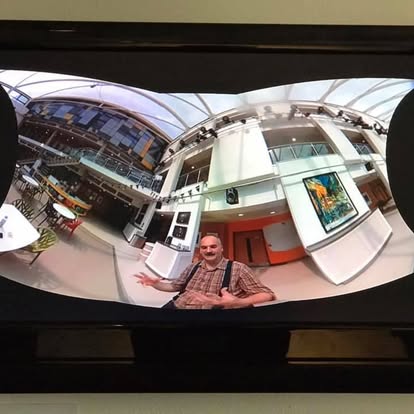
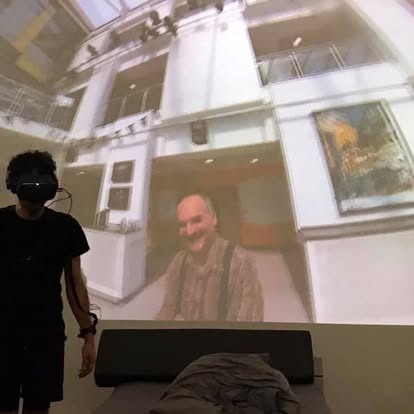
Augmented Bodies, Cyborgs, and 3D-Printed Evolution in Lviv
We tell ourselves that Lemberg, Léopol, Lvov, Lviv and Lwów are all different names for the same city, but in fact each is a distinct city of its own, with very precise rules of transition from one to the other.
Thomas Pynchon, Against the Day
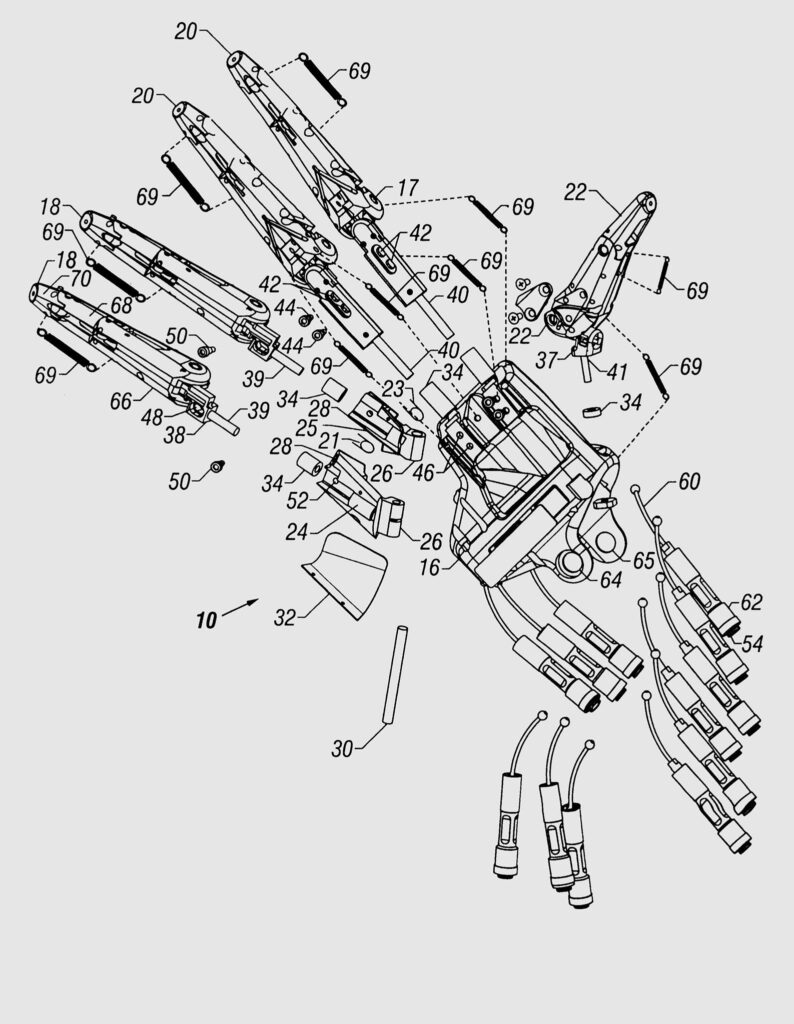

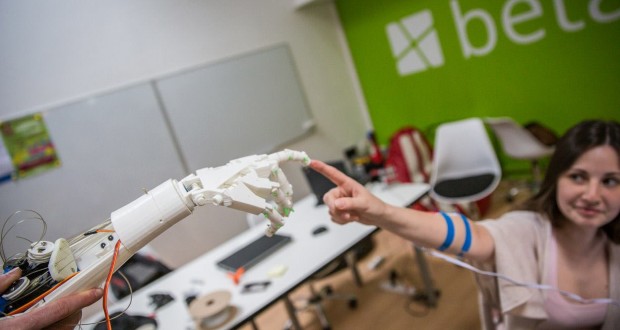
The Futurological Congress
In 2010, inspired by Thomas Pynchon’s meditation on the fluid yet contested nature of place, I was among a group of artists, theorists, and curators from across digital culture and media art convened in Lviv to conceive a format of undisputable, transcultural, and perpetual duration—a space for shared cultural heritage resilient to historical ruptures, political crises, and enforced forgetfulness. The result was the Futurological Congress, named after Stanisław Lem’s prophetic satire, a text emblematic of the disorienting shifts of history: Lem, born into a Polish-Jewish family from Lviv/Lemberg, embraced its German-language name in homage to its Habsburg heritage, even as his legacy found deep resonance in Soviet science and Tarkovsky’s Solaris. Designed to be held every ten years whenever possible, the Congress—cancelled in 2020 due to COVID travel restrictions, with hopes for 2030—offers a forum for critically engaging with a world in transition, altered states of perception, and the uncertain promise of awakening.



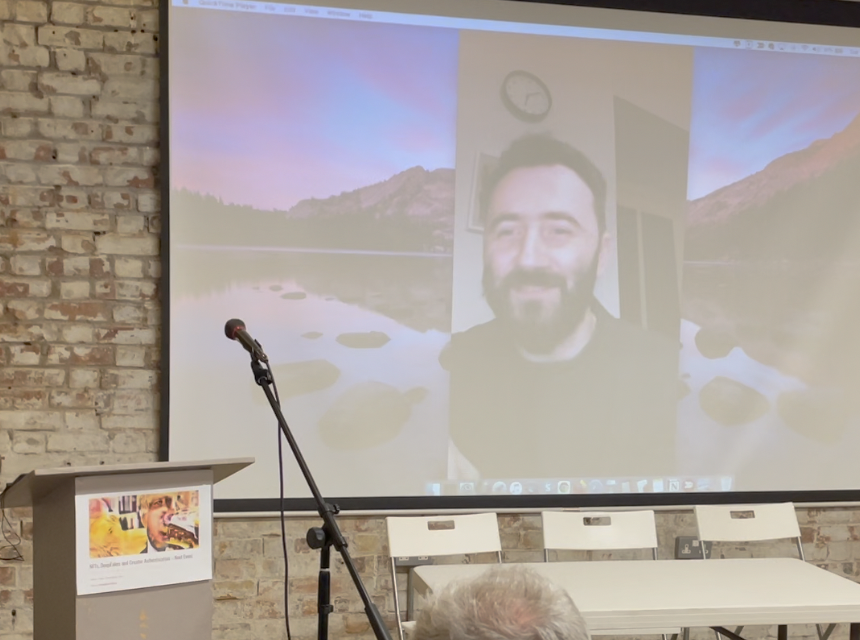
This vision grew from long-standing collaborations with Andrii Linik, a digital artist and curator at the Center for Urban History of East Central Europe in Lviv, where he also engineered and coded the technical framework for Interactive Lviv. The Center, founded by Vienna and London-based art historian Harald Binder, focuses on Galicia under Habsburg rule, investigating urban modernity, media, and public space—precisely the terrain where my research into digital heritage, social memory, and cross-cultural representation is situated. With Andrii, historian Bohdan Shumylovych, Polish digital artist Łukasz Szałankiewicz, curator Ianina Prudenko—founder of the Open Archive of Ukrainian Media Art, associate professor at the National Pedagogical University in Kyiv, and co-curator of a Ukrainian media art retrospective at WRO, Wroclaw, and Dmitry Bulatov—theorist of post-biological art, curator of Biomediale: Postbiological Art, senior curator at the National Center for Contemporary Arts (NCCA), Kaliningrad, Russia, and editor of Evolution Haute Couture. Art and Science in the Post-biological Age, —we sought to establish a speculative laboratory for world-building at the limits of historical consciousness.
Mental Warfare and Cyberpills for Mental Health
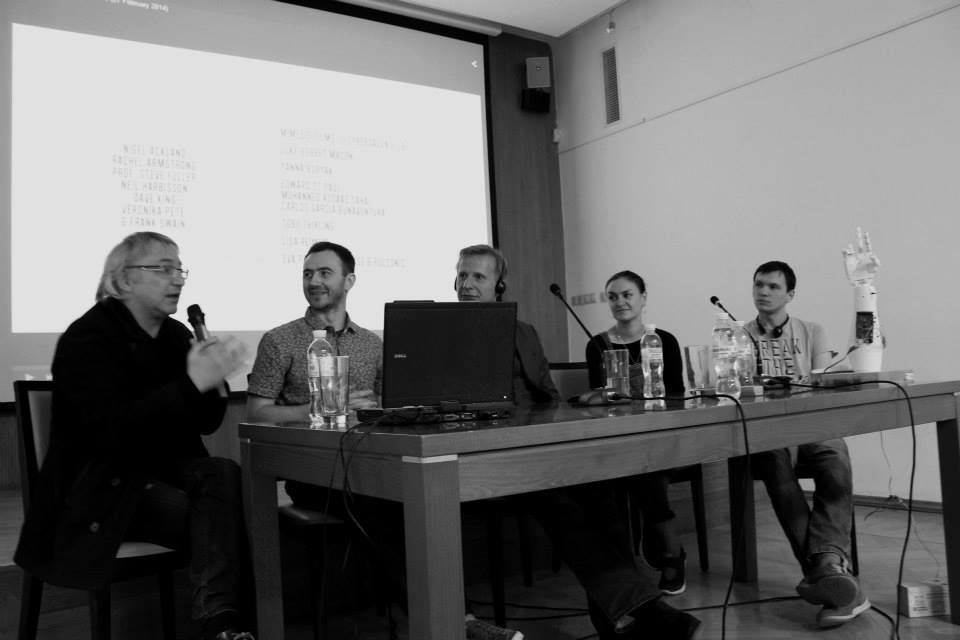

From the Congress emerged multiple projects, including Cyberpills for Mental Health (2014) and a hardware hackathon for DIY prosthetics, developing open-source, 3D-printed bionic limbs with surface EEG sensors for intuitive control, addressing injuries from Maidan and subsequent conflicts. I also contributed to Mental Warfare—Week of Contemporary Art (2014), a city-wide intervention in Lviv, reflecting on the role of art in times of sociopolitical crisis. Lviv’s layered history—Habsburg urban planning atop a medieval core, its Ringstraße, opera, and palatial facades forming a “Vienna of the East”—resonates deeply with my research on postcolonial Austria. A frontier of cultural hybridity, decadence, and imperial self-fashioning, it is equally marked by the trauma of wartime destruction and the Shoah, a history I continue to explore, most recently through his involvement in Johannes Grenzfurthner’s Solvent (2024). If the Habsburg Empire, in its “solution to the Ruthenian question,” laid the groundwork for modern Ukraine, today’s Lviv, bereft of its Jewish past, stands as a testament to the fragility of memory and the contested legacies of imperialism.
Traces of Empire
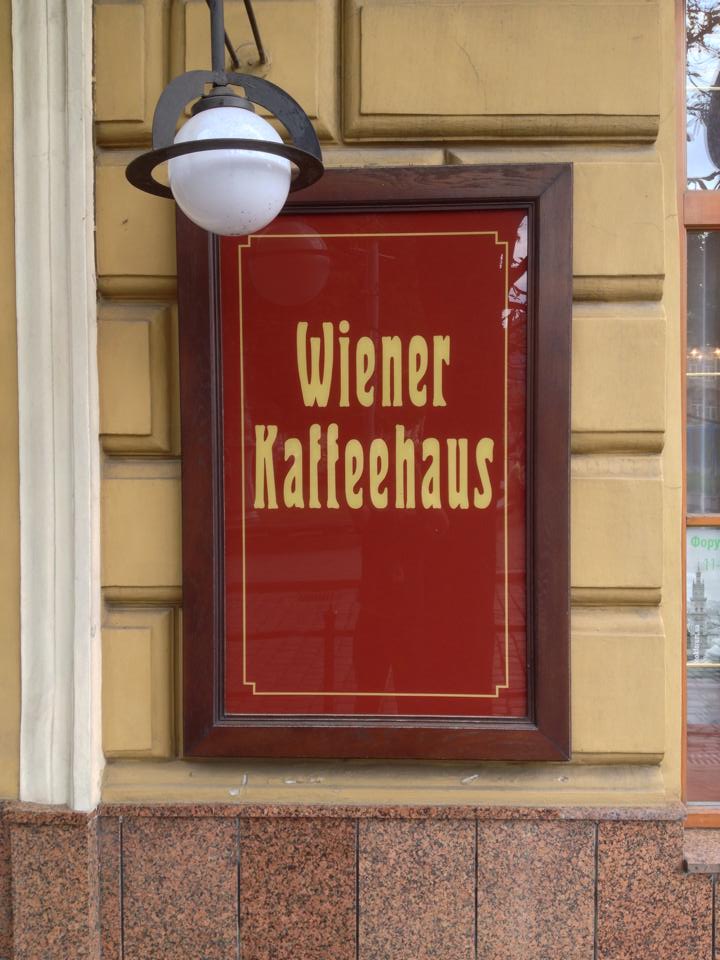
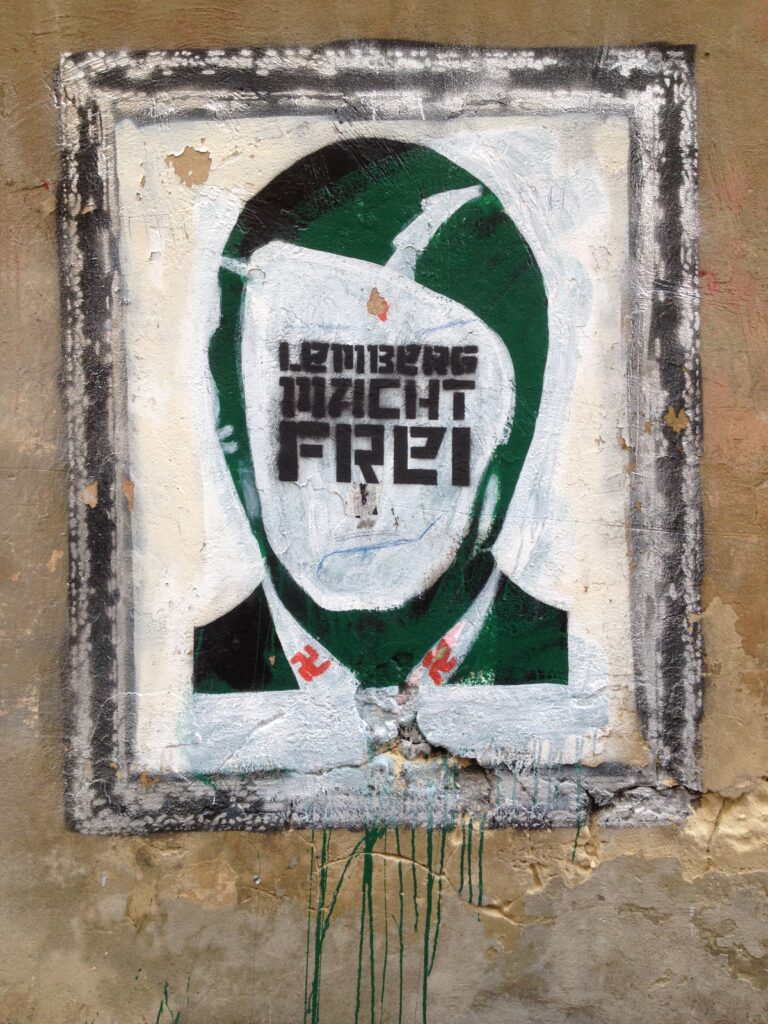

Lviv/Lemberg remains, like Lem’s Congress, an experiment in perception—a shifting reality in which past and future are equally unstable.
Class Wargames
Alongside their installations, digital works and psychogeographic drawings, Furtherfield was – for the first time in its 15 year history – displaying a figurative oil painting in the gallery: Kimathi Donkor’s Toussaint L’Ouverture at Bedourete … As our contribution to the Invisible Forces exhibition, Class Wargames decided to make two ludic artworks which would take their inspiration from Donkor’s impressive painting. For the first of these events on 23rd June, we put on a participatory performance of Stefan’s newly devised scenario …
Richard Barbrook (2014) Class Wargames. Ludic subversion against spectacular capitalism
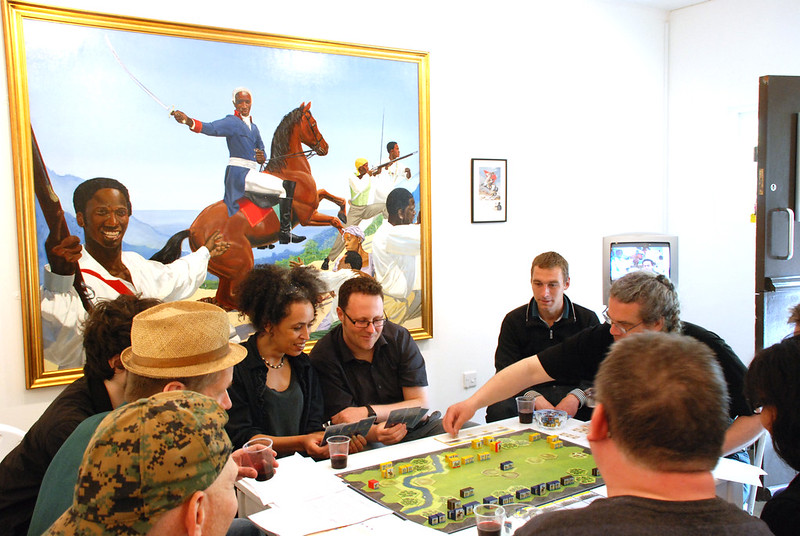
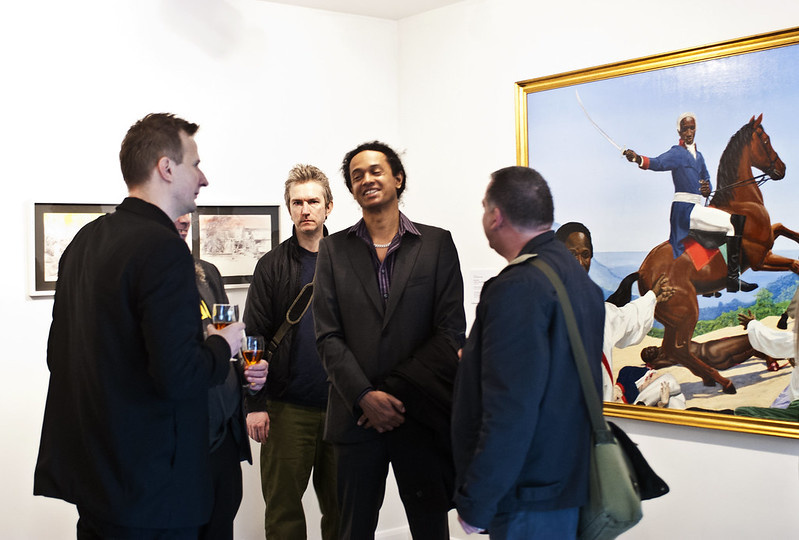
Wargames Are A Continuation Of Politics By Other Means
After relocating to London in 2008, I joined Class Wargames, an artist-activist collective using political gaming to explore revolutionary strategy and insurgent history. Drawn to its fusion of Situationist theory, tactical play, and historical materialism, I became part of a practice where gaming wasn’t mere entertainment but a subversive tool for critique and engagement. Inspired by Guy Debord’s A Game of War, our group restages historical conflicts as participatory performances, turning strategic simulations into radical pedagogy. Through public play sessions, exhibitions, and interventions, Class Wargames reimagines gaming as an arena for collective intelligence and dissent, where every move was both analysis and provocation.
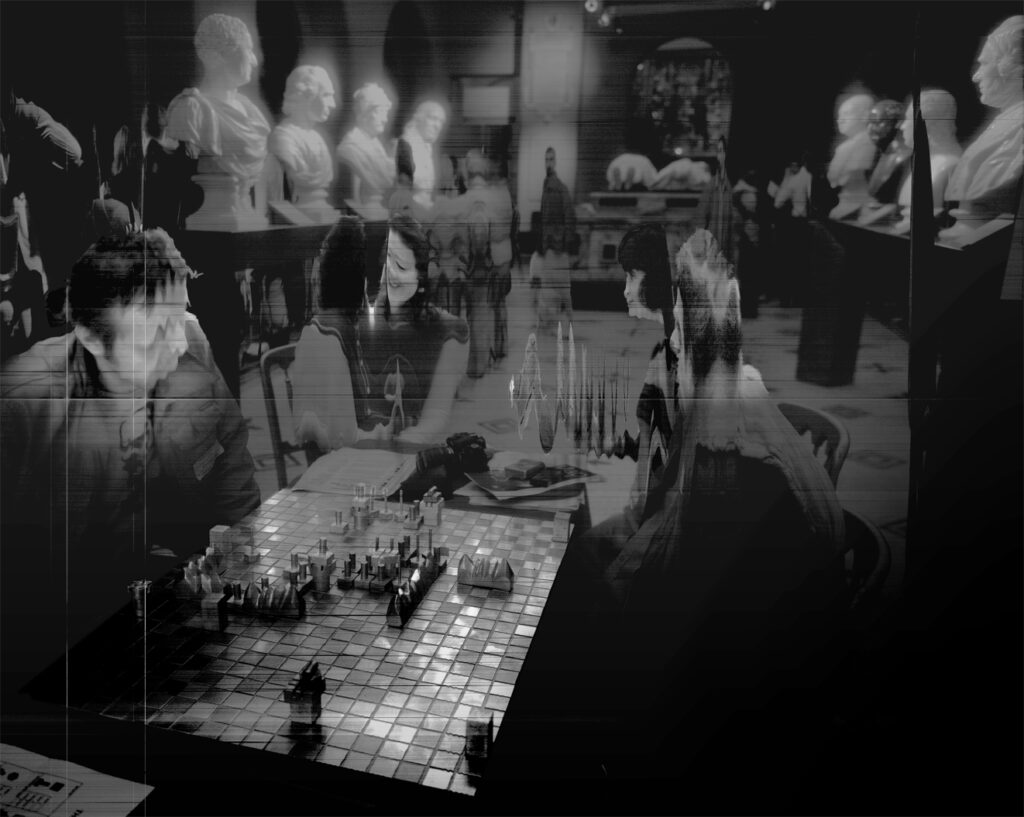



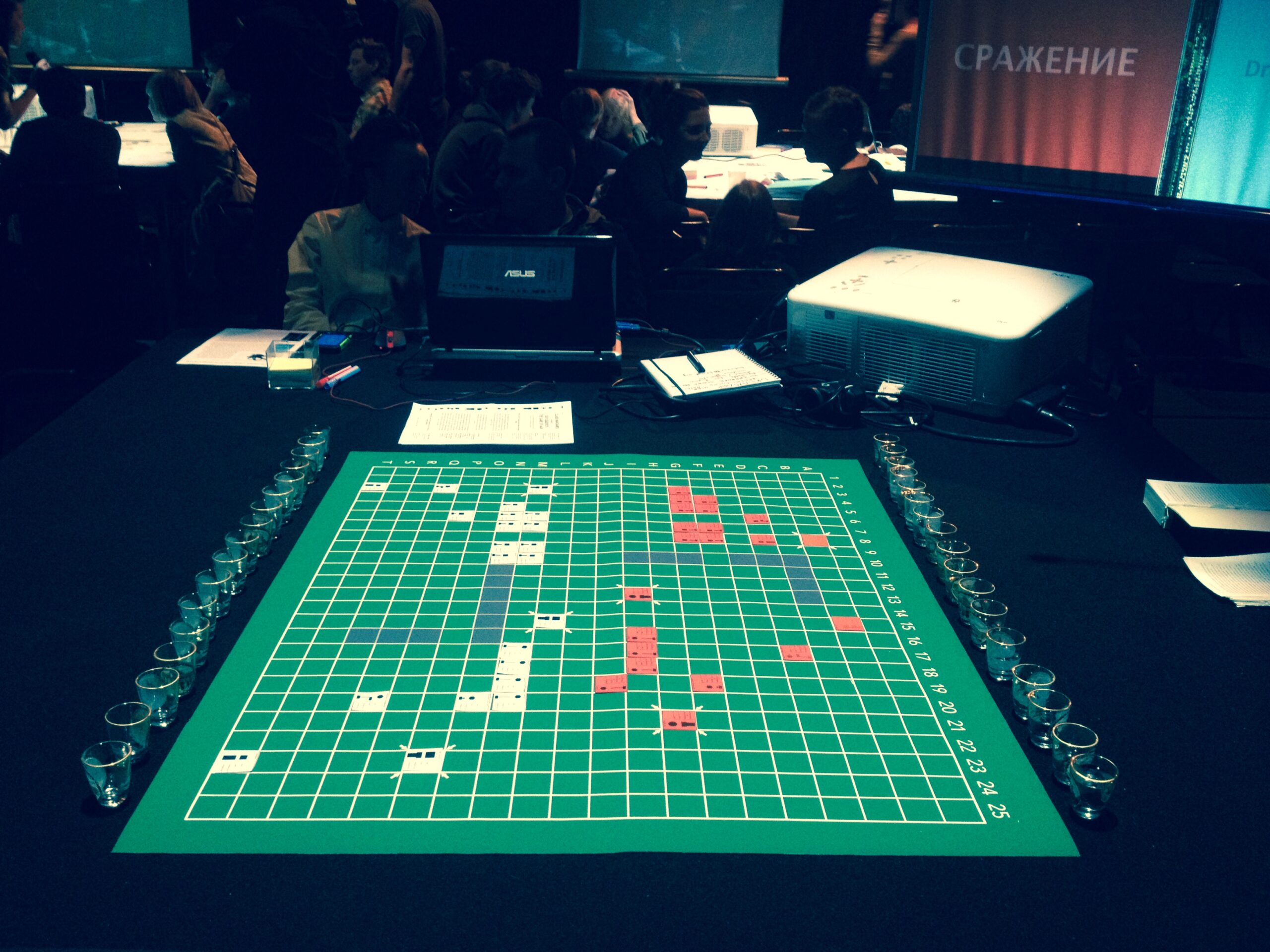
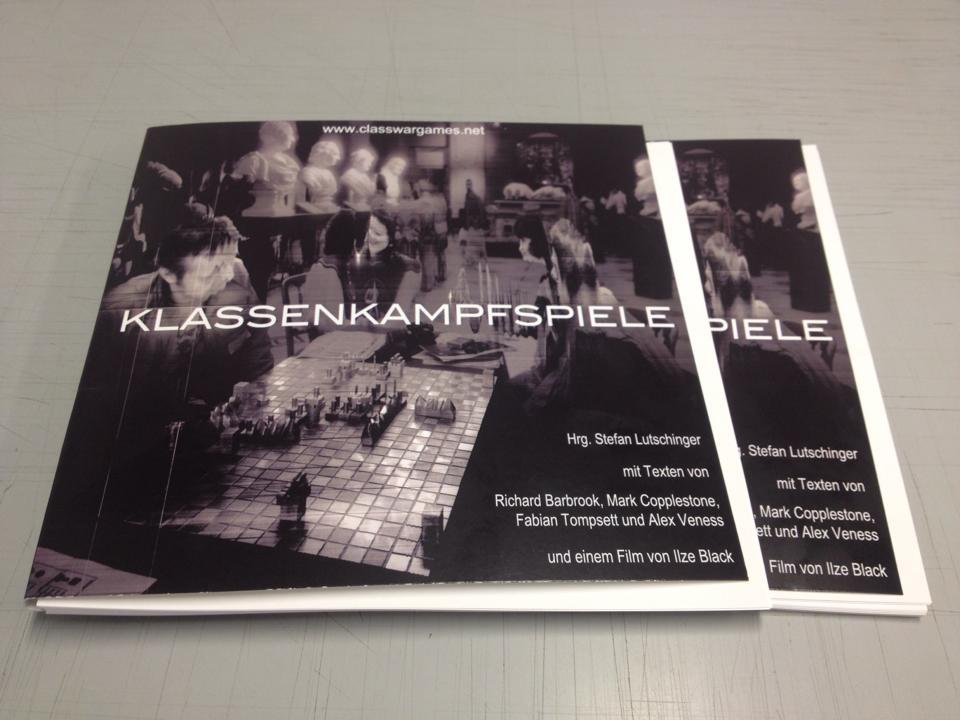
Schutzbund 1934 – The Austrian Civil War Game
Schutzbund 1934 is a board game and a participatory performance that brings the first armed revolution against a fascist regime in Europe to life. Participants in this political simulation of the February Uprising experience the value of revolutionary virtues and the openness of history through play. Schutzbund 1934 was developed by Class Wargames as a didactic medium for their “Living History” project on the Austrian Civil War (1927-1934) at the Centre for the Study of Democracy at the University of Westminster.
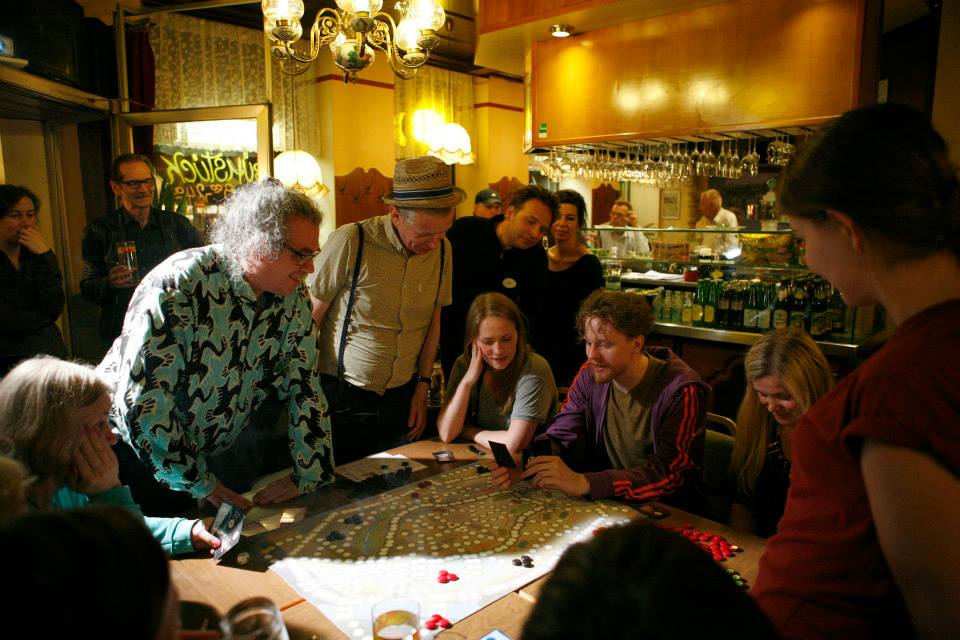

Residencies – Research, Curation, Praxis
Stefan Lutschinger – a Viennese philosopher who was working as a curator-in-residence at the National Center for Contemporary Art (NCCA) – had shown his mettle by securing the invitation to participate in this wonderful exhibition at the Winter Palace.
Richard Barbrook (2014) Class Wargames. Ludic subversion against spectacular capitalism



Residencies
These residencies collectively explore how media practices open critical thinking spaces around social memory, especially within postcolonial contexts and transitional societies. Drawing on emancipatory media strategies, each residency acts as a living archive, activating alternative historical imaginaries through artistic experimentation and curatorial intervention.
- University Residency. Arebyte Gallery, London, England (2018)
- Wikimedian-in-Residence. Museum of Domestic Design and Architecture (MoDA), London, England (2017)
- Artist-in-Residence. BOEM – Action, Art, Politics. Vienna, Austria (2011)
- Curator-in-Residence. Cyland Media Art Lab, National Center for Contemporary Arts, Saint Petersburg, Russia (2008)
Transitional Societies – Ephemeral Crossings
At BOEM, an egalitarian art club modelled after a Yugoslav workers’ club, I explored the post-1991 fragmentation of Yugoslav identity, the role of the media, and the EU’s repressed war trauma, while in Kronstadt, I engaged with dark heritage and the gentrification of former zones of political rupture—both spaces where historical fractures are reconfigured through cultural production.
BOEM, Vienna

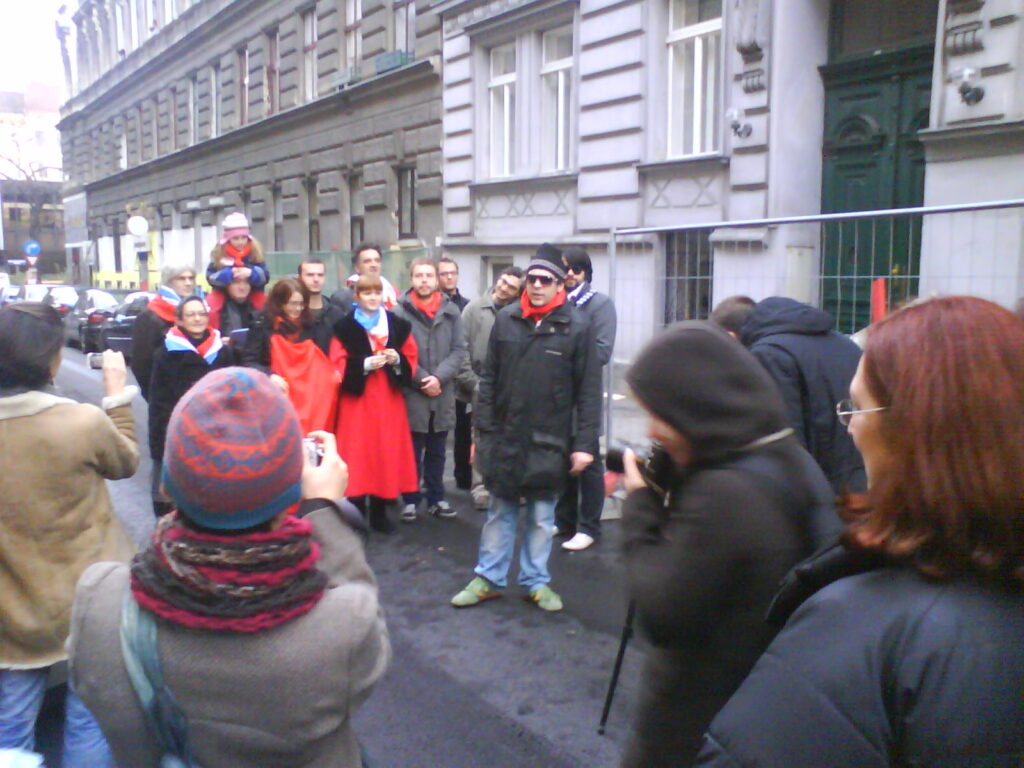
Cyland Media Art Lab, Kronstadt
In 2008, I was invited by the National Center for Contemporary Arts (NCCA) for a curatorial residency to help establish Cyland Media Art Lab in Kronstadt, a formerly restricted military zone throughout the Soviet era, symbolically reclaimed by St. Petersburg in the 1990s as part of a broader cultural and urban regeneration process. Kronstadt’s sailors, once central to revolutionary mythology, had remained taboo in Soviet historical narratives until officially rehabilitated under Yeltsin. Developing a media art lab in this setting meant working within the politics of memory and urban transition, exploring how cultural institutions shape social memory in post-authoritarian, post-industrial spaces.

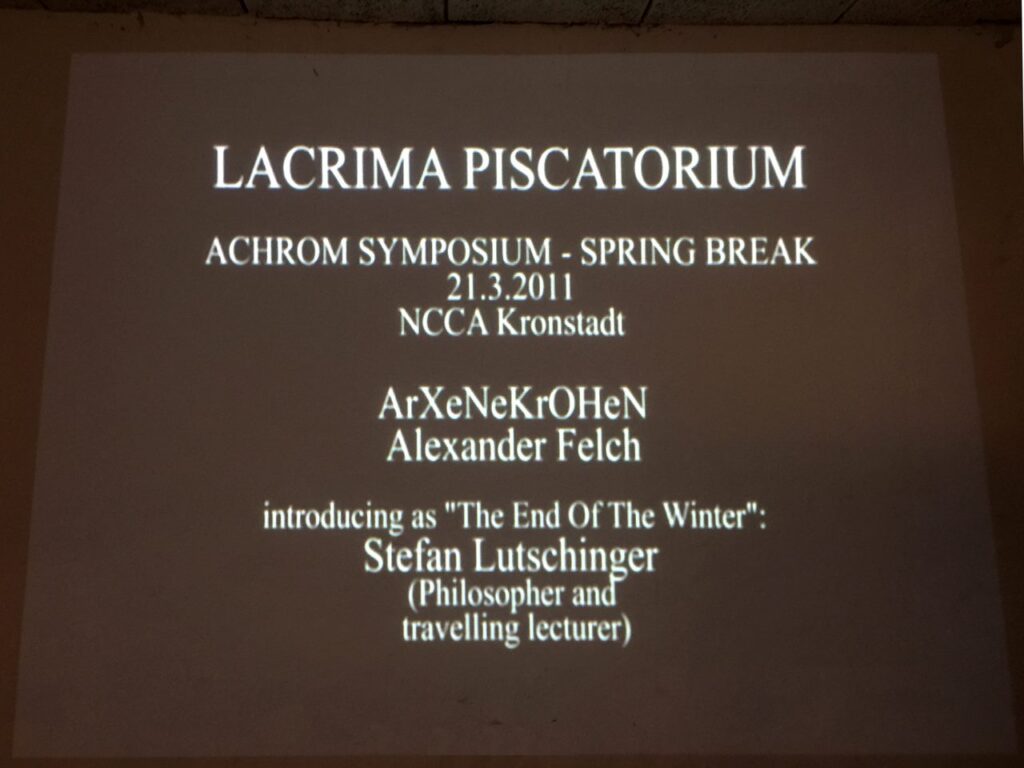
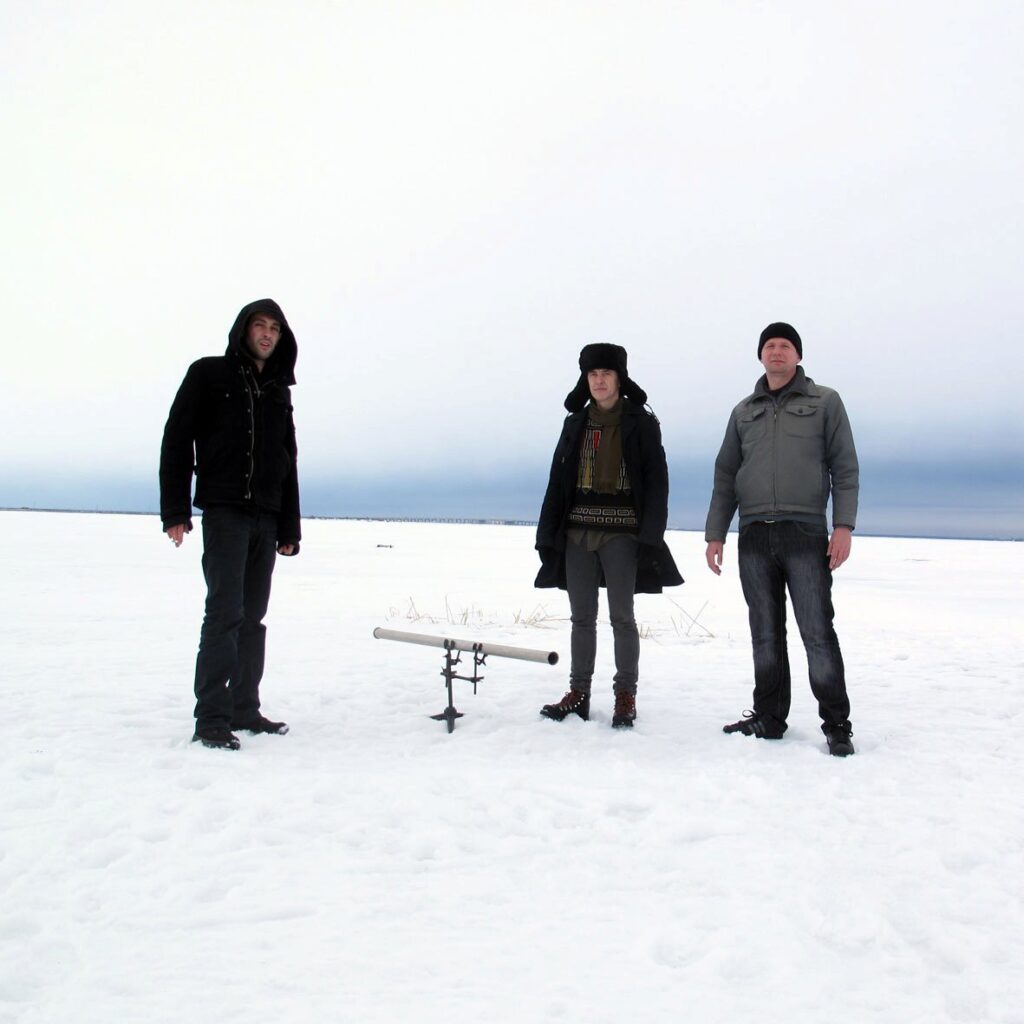
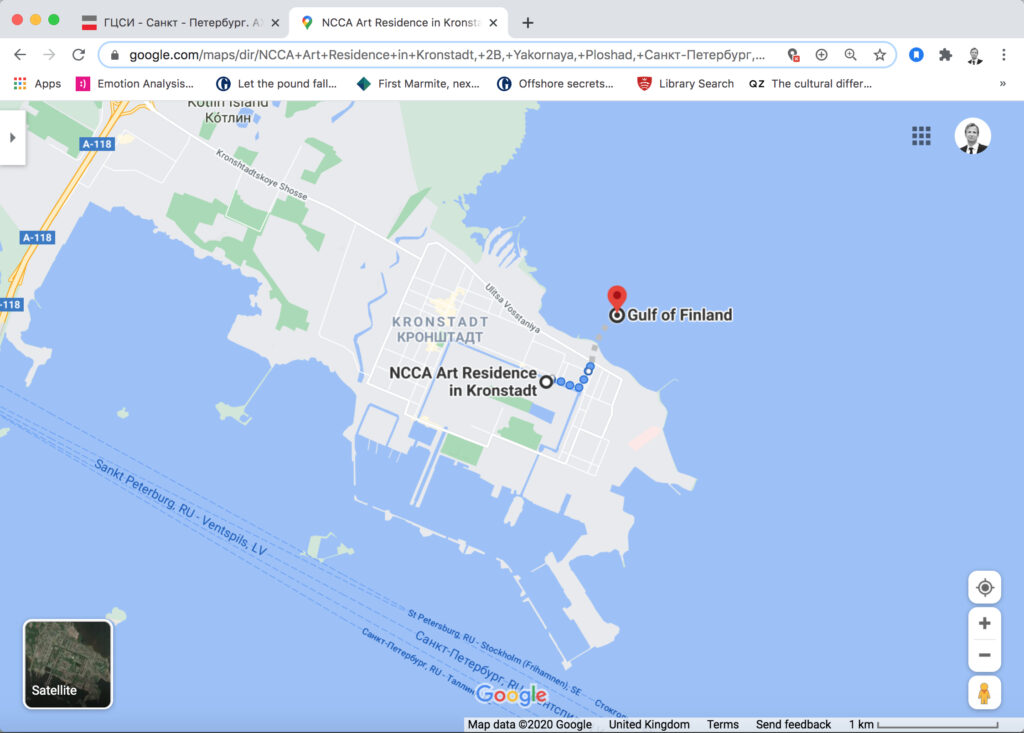
Cyberfest 2008 – The Storming of the Winter Palace
As part of my residency, I co-curated Cyberfest 2008, Russia’s first festival of cybernetic arts, held at the Winter Palace / Hermitage Museum—a site where imperial spectacle, revolutionary mythology, and avant-garde experimentation converge. The invitation to curate at the Hermitage, a global landmark of institutionalised historical memory, offered a platform to interrogate how history is constructed, staged, and mediated—questions that have only grown more urgent in the era of fake news, algorithmic propaganda, and AI-generated historical narratives.

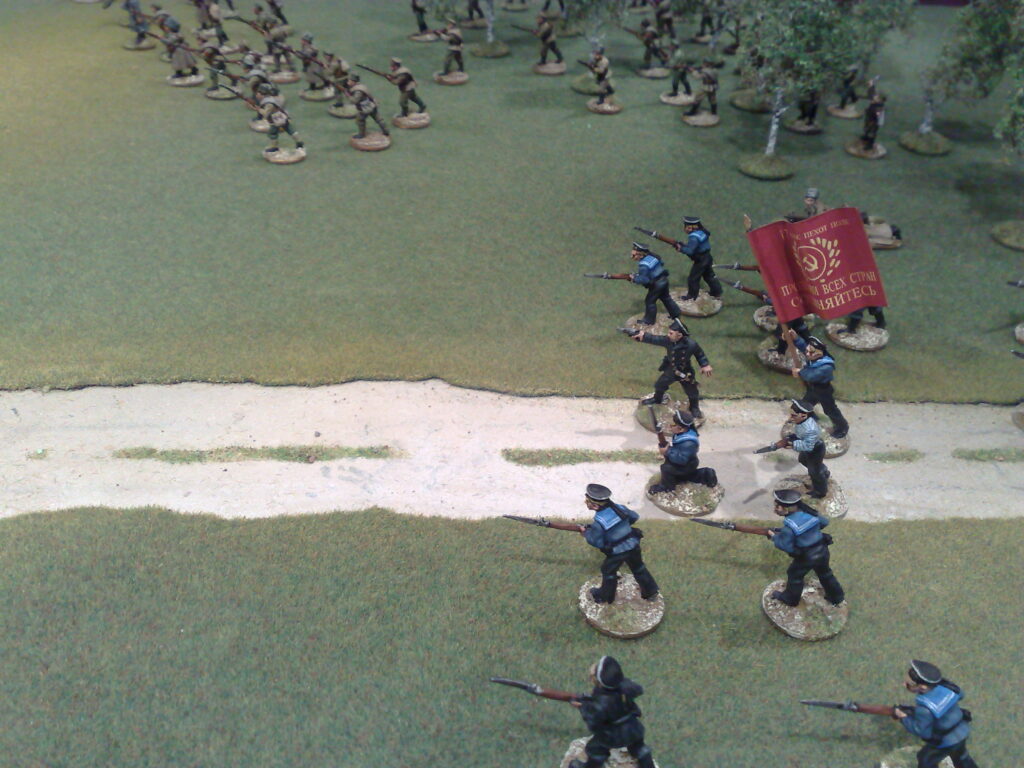
At Cyberfest, I invited Tagr.tv to restage Eisensteins storming of the Winter Palace—a cinematic fiction cemented as history through mass media—for the social media age. Using their mobile interview station, they reframed Palace Square as a live spectacle, where historical truth is dictated by viral reach. Meanwhile, Class Wargames and I became the event itself, deploying toy soldiers for Red vs. Red—a game dismantling revolutionary mythology’s simplistic binaries—alongside a demo of Debord’s Game of War, designed to expose and resist the spectacle’s mechanics. As AI-generated propaganda reshapes historical narratives, these experiments in media archaeology and tactical play remain more urgent than ever.
Postcolonial Contexts – Networks and Nodes
From developing an immersive exhibition with my students at Arebyte Gallery—located in London City Island, a cultural hub home to institutions like the English National Ballet, situated on the historic East India Docks, once a key node of the British Empire’s global trade networks—to the revival of marginalised designers’ archives as Wikimedian-in-Residence at MoDA, each residency mobilises emancipatory media strategies.
University Residency at Arebyte Gallery
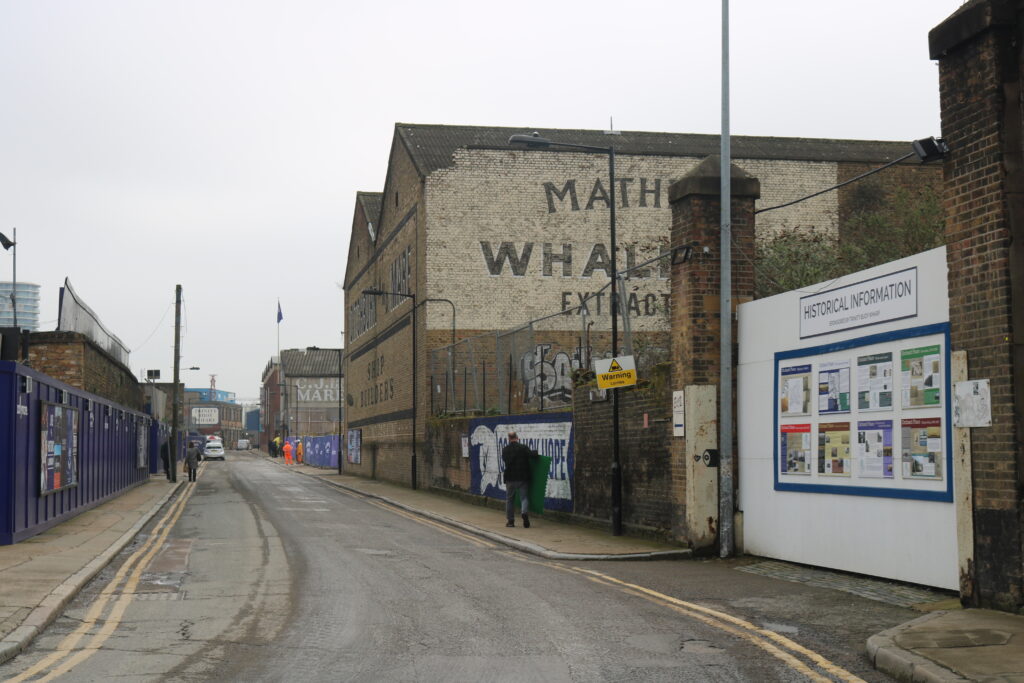

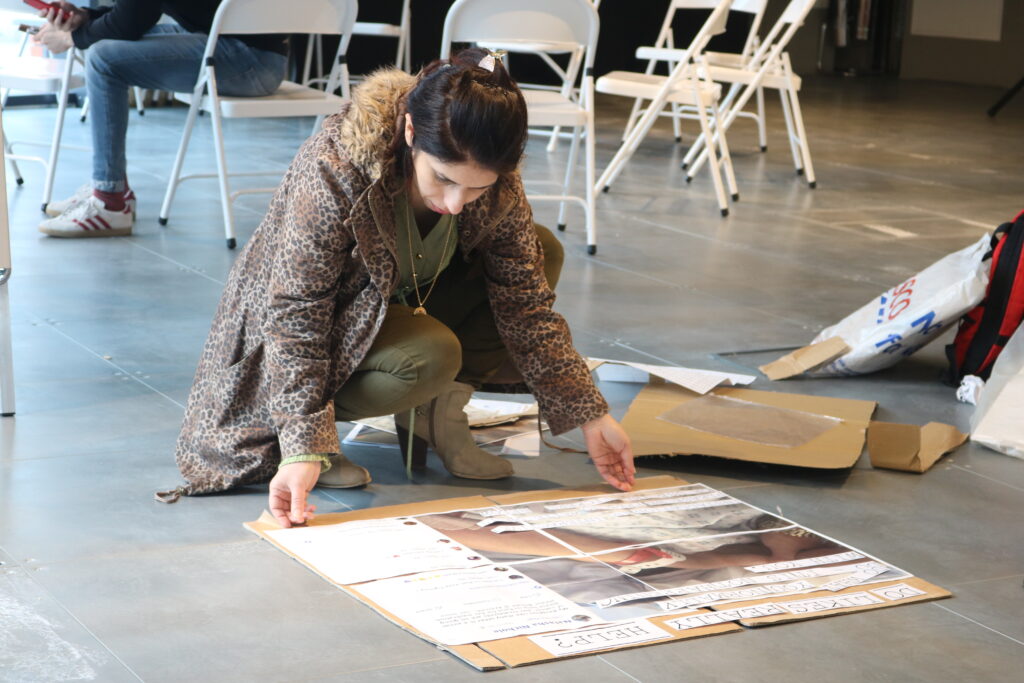

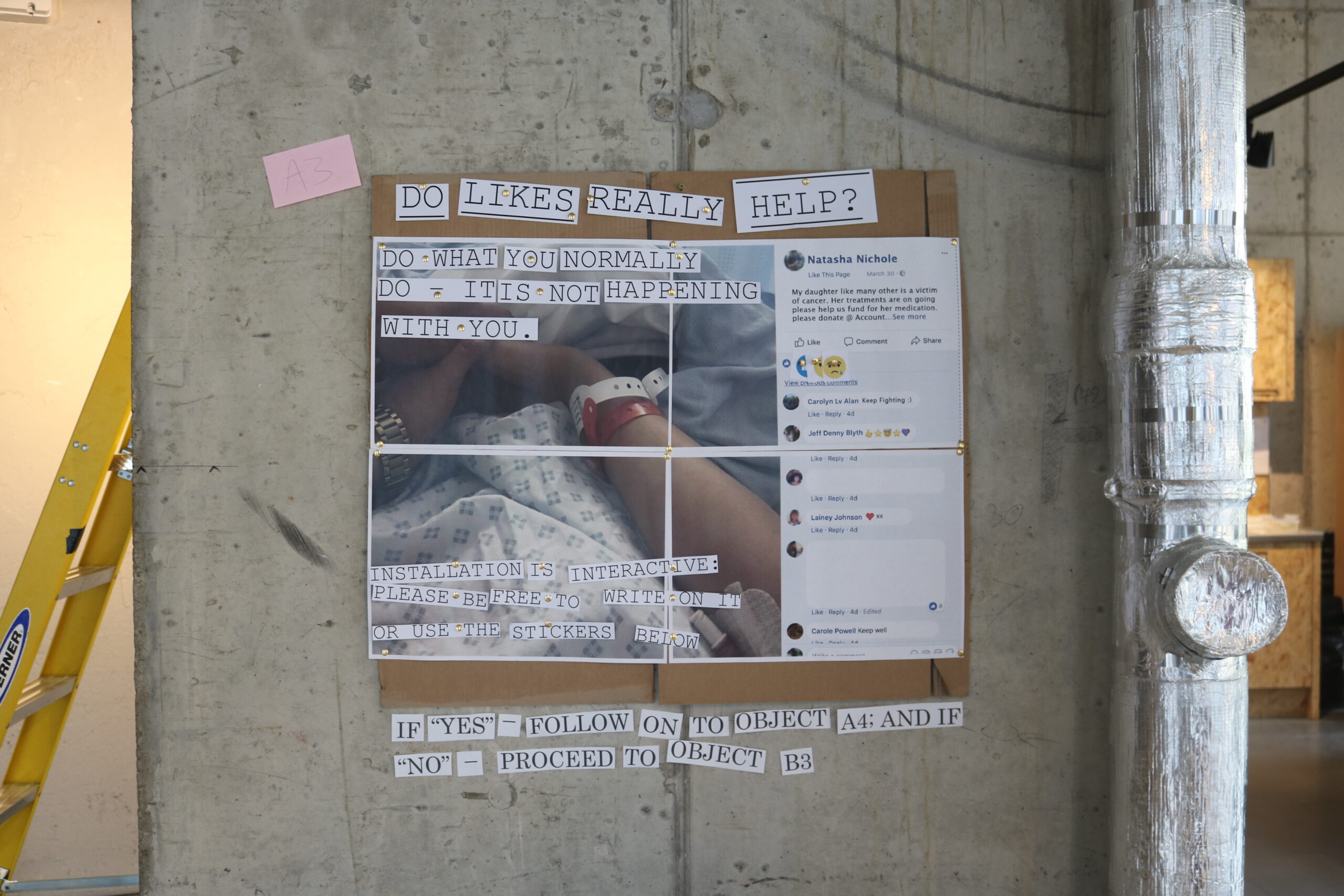
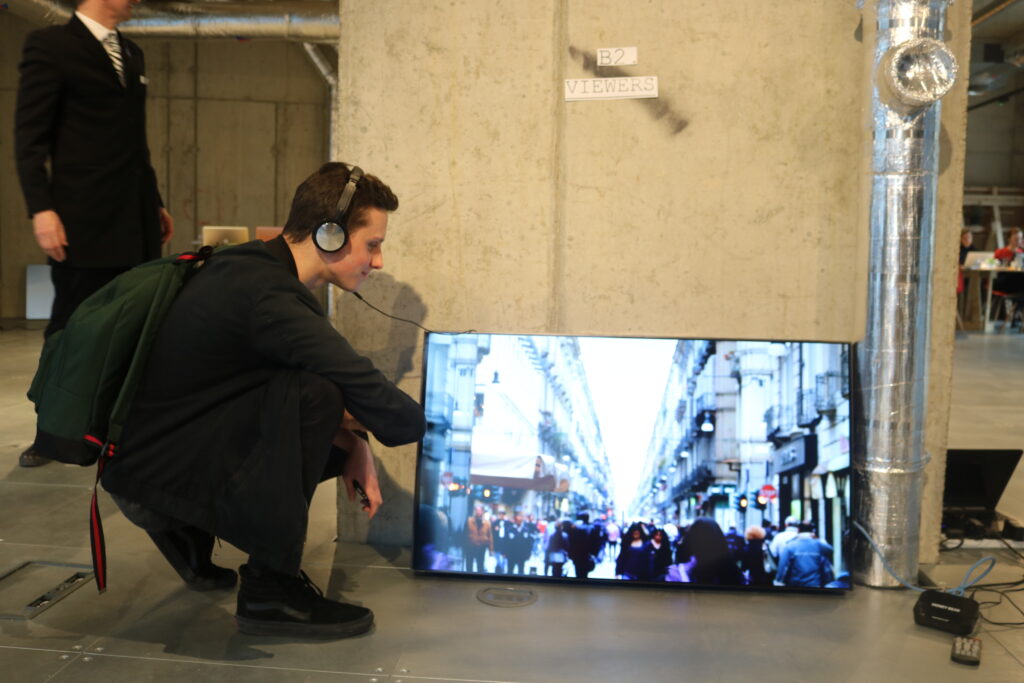
In 2018, I was awarded a highly competitive university residency at Arebyte Gallery, joining artists and researchers from RCA, Goldsmiths, Central Saint Martins, and UCL. Situated on London City Island, Arebyte became the site of the student-led immersive exhibition The Maze on trust in social media, while the residency as a whole engaged deeply with the island’s historical and psychogeographical layers.
Through explorations of Leamouth Peninsula, East India Dock Basin, and materials sourced from the Museum of London Docklands, we investigated the island’s past as the imperial gateway for Britain’s trade with India—a space of power, circulation, and contested narratives. Just as Kronstadt was a strategic and liminal island in Russian history, London City Island—home to the city’s only lighthouse—provided a fitting backdrop for critically examining shifting terrains of control, visibility, and communication in digital culture.
In both cases, gentrification has transformed these sites through the construction of cultural hubs, reshaping their historical significance within contemporary urban landscapes.
Curatorial Practice – Club Culture, Visual Music, Emergent & Extinct Media
Curated Exhibitions 1 – Emergent & Extinct Media

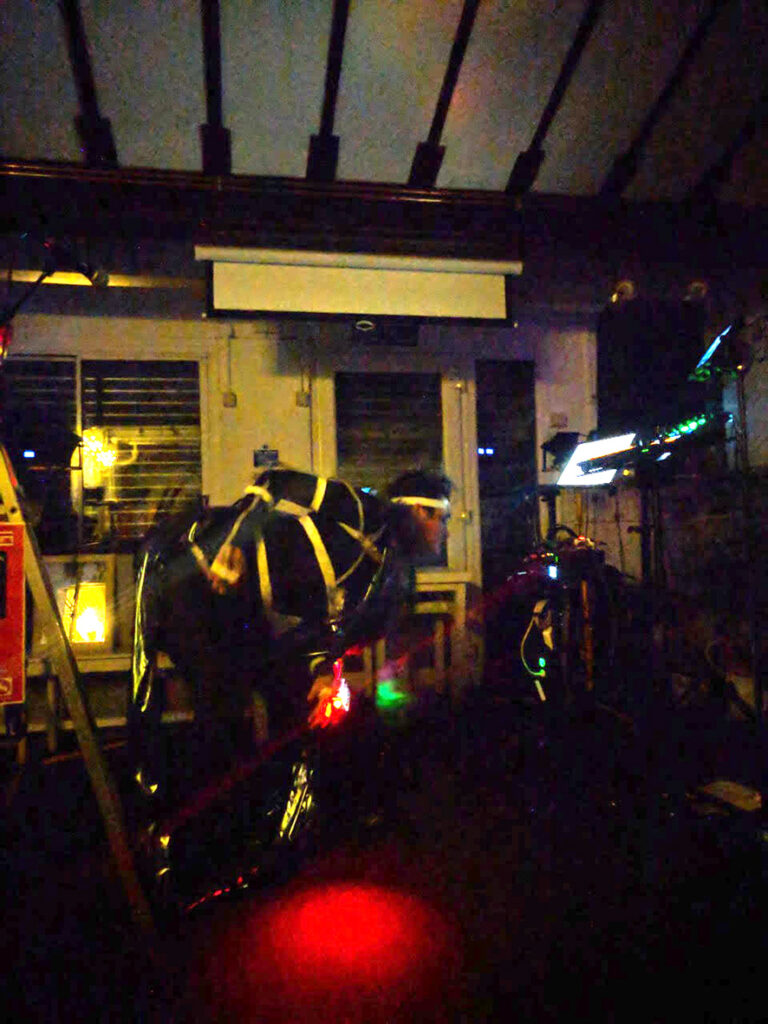
Selection
- 15 Years of Cybersonica: Musica est spiritus vitae, CYBERSONICA, online event (2021)
- Transient Hole (Variations) X, Furtherfield Gallery, McKenzie Pavilion, Finsbury Park, London, England (2018)
- Art’s Birthday 2014 – The Eternal Network, Raylab, London, England (2014)
- Cyberfest – International Festival of Cybernetic Art, State Hermitage Museum, St. Petersburg, Russia (2008)
- Pathosbüro: path-Oh!-logies, Raum D, Q21/MuseumsQuartier. Vienna, Austria (2007)
- Paraflows – Annual Convention for Digital Arts and Cultures, Kunsthalle Wien, MuseumsQuartier. Vienna, Austria (2006)
- Strange Cargo, 0>port, Q21/MuseumsQuartier. Vienna, Austria (2006)
- Parliaments of Art – Festival for Self-Organised Cultural Forms, Semperdepot. Vienna, Austria (2005)
Cybersonica – Live-Coding Music with TidalCycles and Visuals with Hydra
15 Years of Cybersonica (2021) reflected on the evolution of sonic and interactive art in online spaces, showcasing the legacy of experimental sound practices, including live coding performances with TidalCycles and explorations of algorithmic composition.
Live coding resources
- Alan F. Blackwell, Emma Cocker, Geoff Cox et al. (2022) Live Coding. A User’s Manual. Cambridge, Mass.: MIT Press
- Alex McLean, Making music with text[ure]: slab.org
- Olivia Jack, Hydra: hydra.ojack.xyz
Transient Hole – Wearable Instruments as NIME (New Interfaces for Musical Expression)
For Transient Hole (Variations) X (2018) at Furtherfield Gallery and Furtherfield Commons, Alexander Felch invited me to co-curate the instability of digital environments with him featuring works such as Yilin Wang’s Virtual Garden or MONSTERFRAU’s iPhone Costume, a wearable instrument, which reimagined the body as a site of sonic interaction (exhibition catalogue).

Earlier exhibitions such as Cyberfest (2008) at the State Hermitage Museum positioned digital art within historical institutions, while Paraflows (2006) and Strange Cargo (2006) at MuseumsQuartier in Vienna examined digital arts as part of a broader cultural discourse, engaging with emergent digital practices and critical media theory. Pathosbüro: path-Oh!-logies (2007) delved into Aby Warburg’s Pathosformel, investigating affect, movement, and embodied memory through collaborations with dancers and performers.
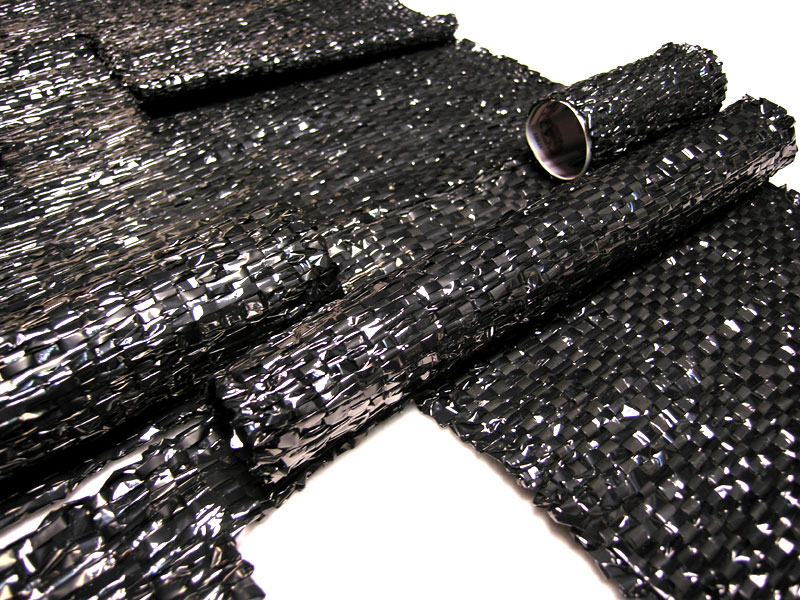
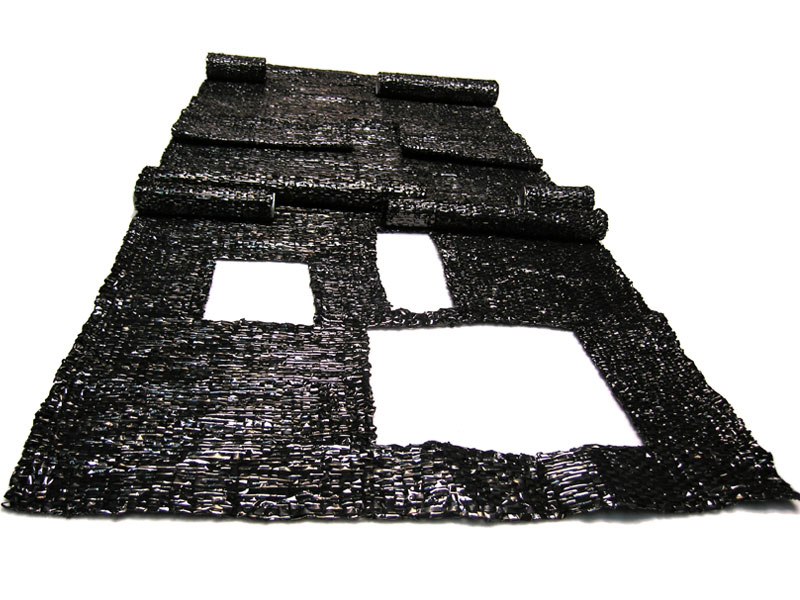
Before and After Cybernetic Serendipity and Parliaments of Art
Parliaments of Art (2005) was a self-organised festival that questioned institutional frameworks and examined digital and networked artistic practices. A key highlight of this project was an exhibition staged Before and After Cybernetic Serendipity, critically revisiting Jasia Reichardt’s groundbreaking 1968 show. This retrospective perspective placed historical cybernetic art in dialogue with contemporary digital aesthetics, offering a lens through which to reconsider the shifting relationship between art and computation.
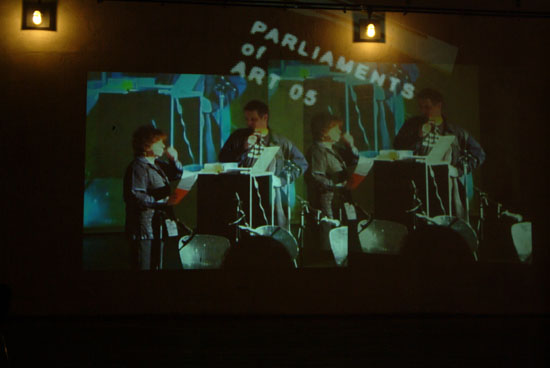


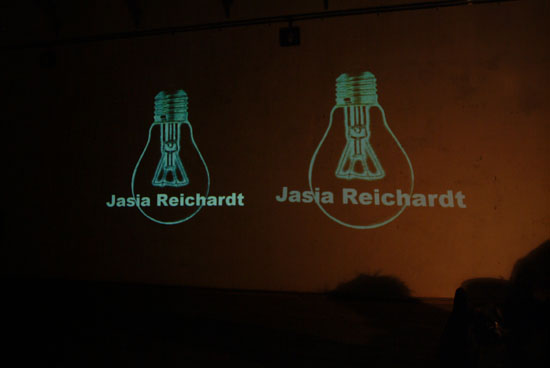
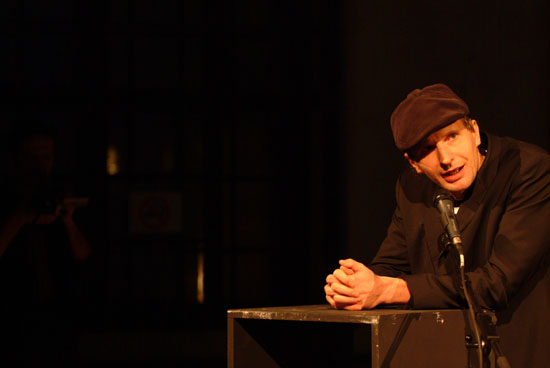
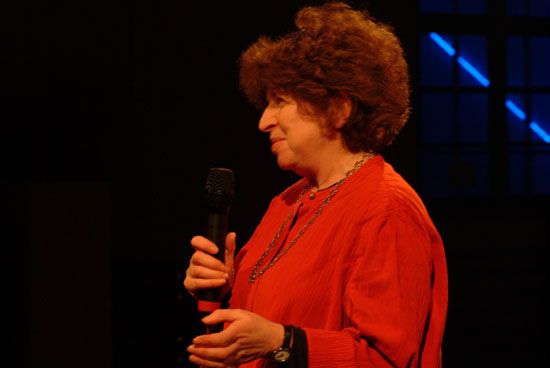


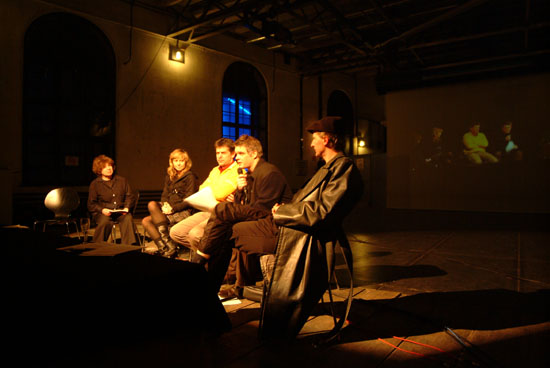

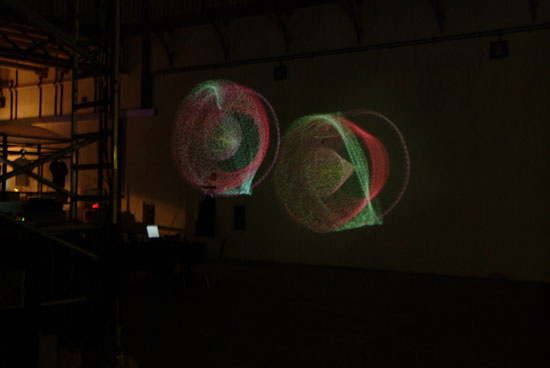
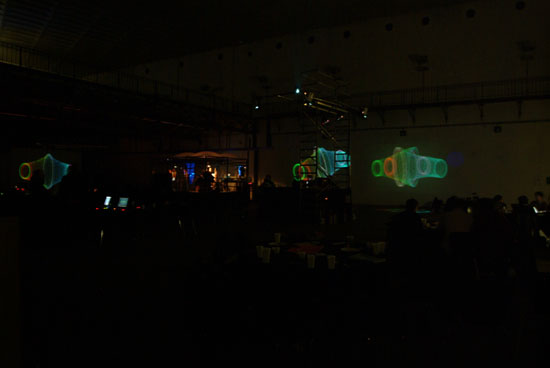
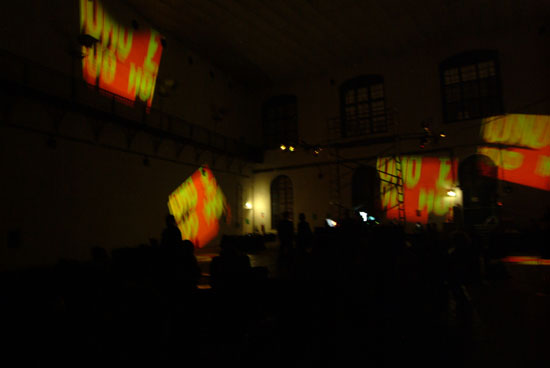
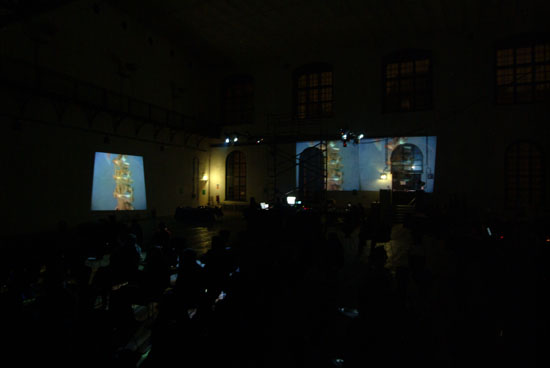
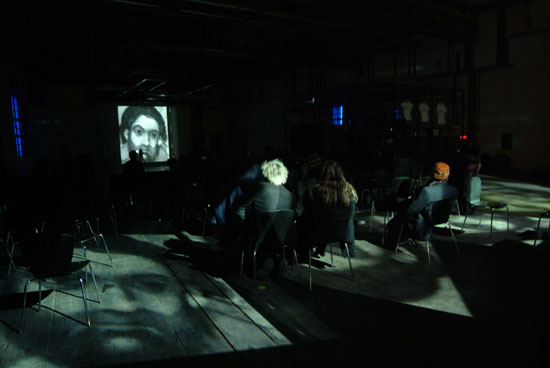
Across these interventions, the curatorial approach has consistently bridged experimental practice, theoretical inquiry, and the politics of technological mediation—exploring the tensions between autonomy and control, the body and the interface, and institutional power versus self-organised artistic networks.
Curated Exhibitions 2 – Club Culture and Visual Music
Media theoreticians like Stefan Lutschinger became interested in the VJs. The differences between the club-VJs and the gallery installation-VJs proved to be considerable. Like every true artistic movement, everyone has had their own ideas about VJ-ing …
Frederick Baker (2007) The Art of Projectionism
From 2004 to 2008, I was a curator at Q21/Electric Avenue, MuseumsQuartier Vienna, where I co-founded and curated the acclaimed audiovisual event series Equaleyes at Ovalhalle. Equaleyes was an interdisciplinary platform bringing together VJs, DJs, projection designers, philosophers, media theorists, and visual artists, creating experimental audiovisual happenings that established Vienna as an international hotspot for visual culture.

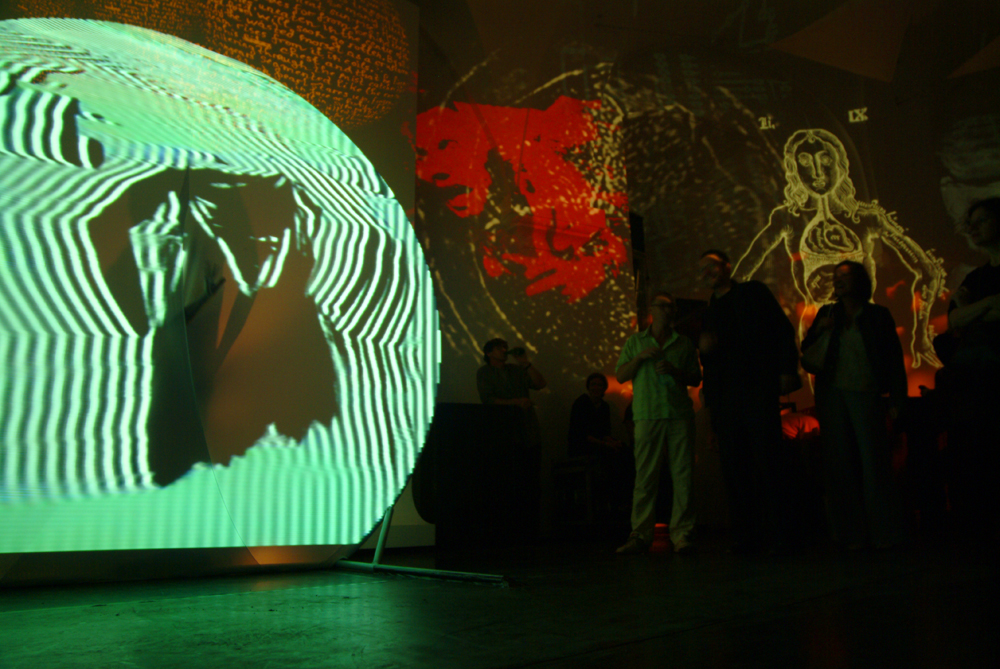
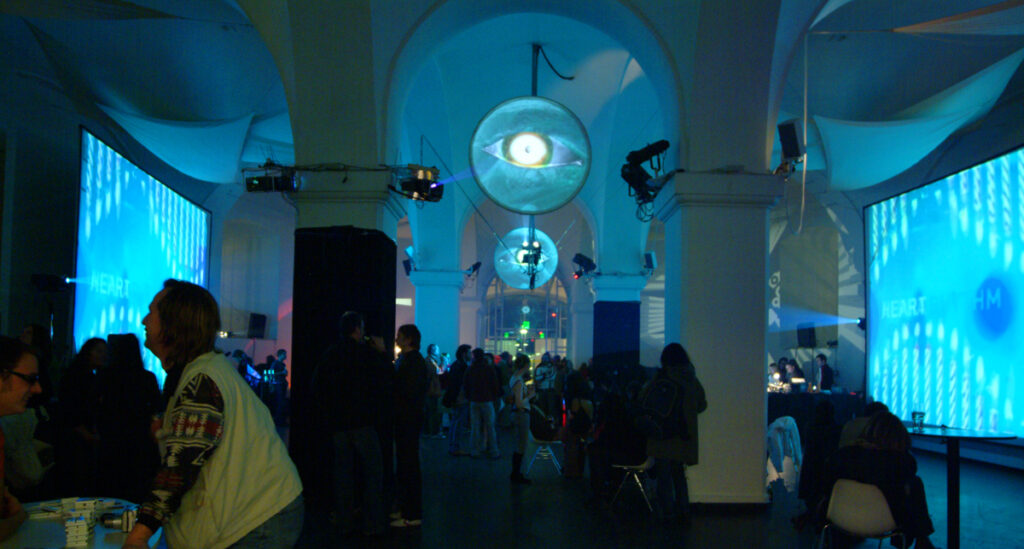
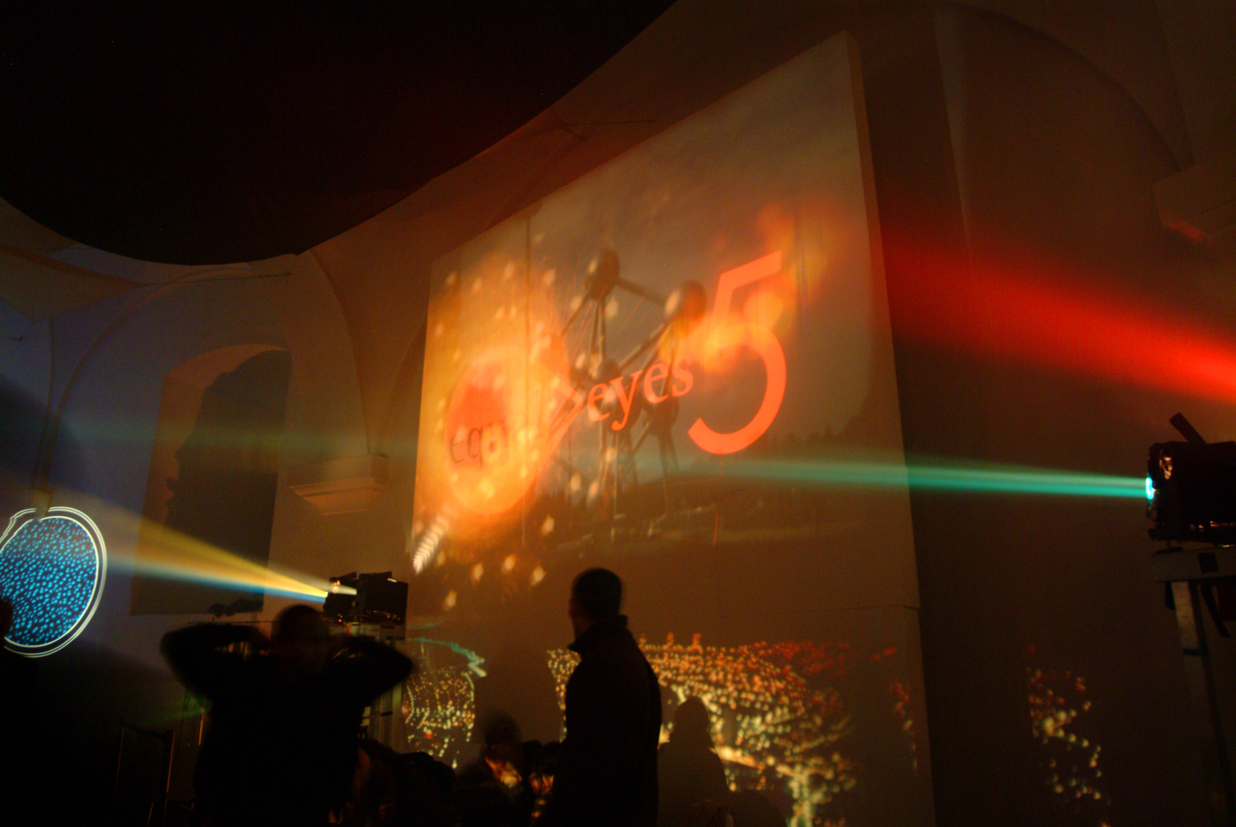
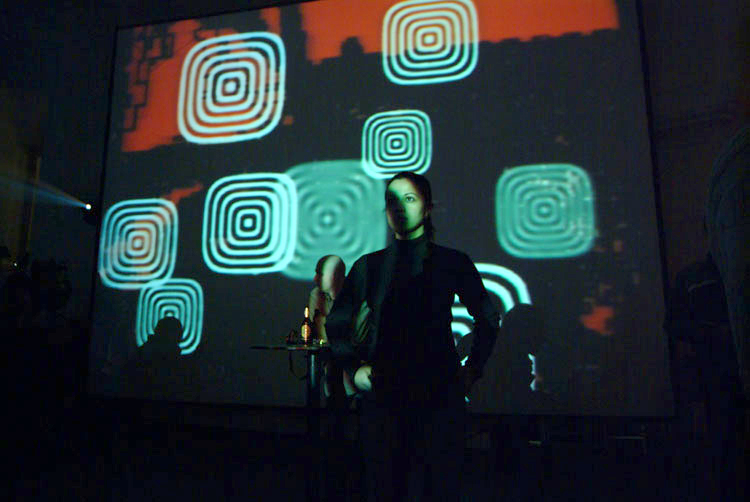

Exhibitions and Congress
- Resfest, frei_raum Q21 exhibition space/MuseumsQuartier. Vienna, Austria (2005)
- pooool Plays – The Means of Vision, frei_raum Q21 exhibition space, Q21/MuseumsQuartier. Vienna, Austria (2005)
- Equaleyes Congress – Sehgemeinschaften, Ovalhalle, MuseumsQuartier. Vienna, Austria (2004)
Complementing these events, I curated the Equaleyes Sehschule (“School of Seeing”), a series of lectures and discussions on media theory, visual semiotics, and interdisciplinary artistic practice.
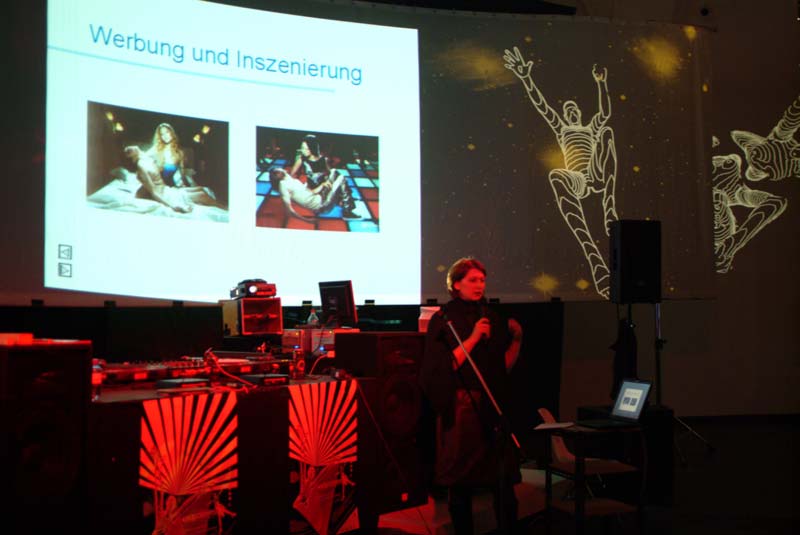
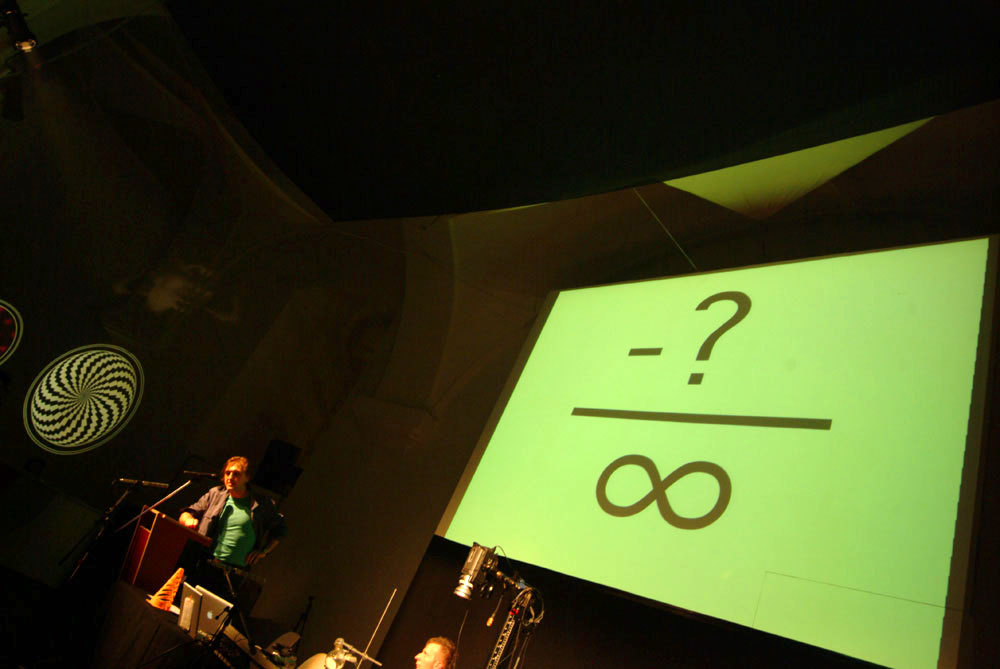
0>port – Hub for VJing, visual music, and projectionism
Additionally, as a curator of 0>port (2006–2008), I further developed Electric Avenue as a vibrant hub for VJing, visual music, and projectionism, promoting dialogue among visualists and showcasing diverse techniques—from high-tech digital mixing to analogue media experimentation.
Juror – Participatory, Emancipatory, Counter-Hegemonic
“kohle unter den erfolglosen kuenstern zu verteilen ja das ist genau der flutschfinger ja der sitzt auch in der eclectic avenue”
Lukas Jost Gross (2008) glatteis neue meister (eng. “black ice new masters. a cellphone novel”)
(eng. “to distribute money among unsuccessful artists yes that is exactly lutschinger the slippery finger yes he also sits in the eclectic avenue”)
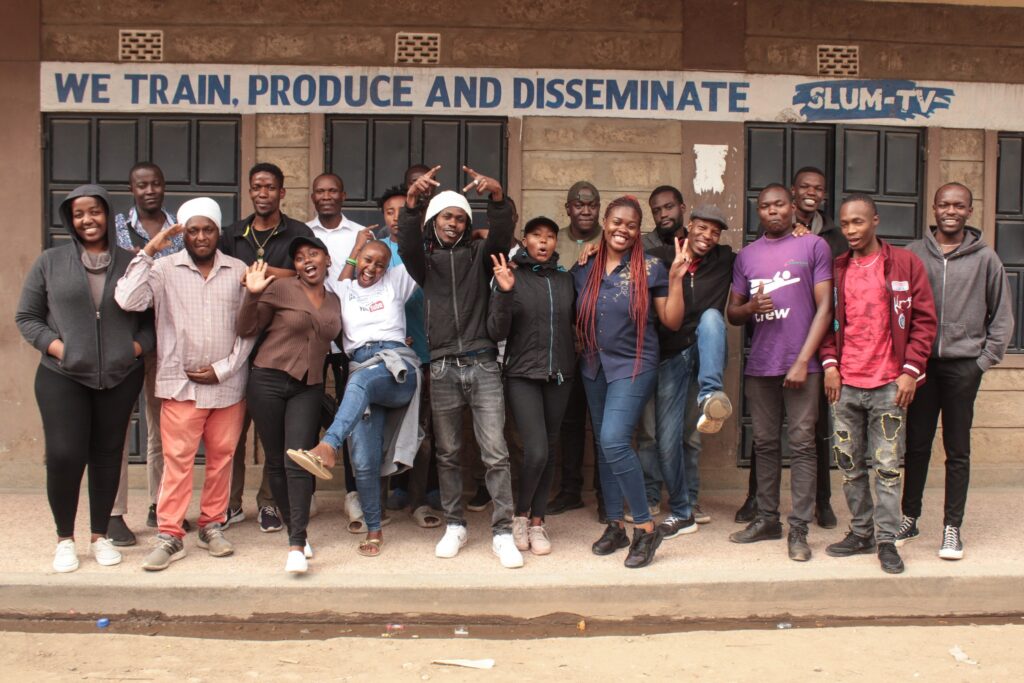
Cultural Policy and Redistributive Decision-Making
As the inaugural coordinator of netznetz.net, Vienna’s pioneering self-governed funding model for digital culture, I played a key role in shaping participatory cultural policy and redistributive decision-making in the arts. My tenure saw the support of seminal initiatives like Metalab, Vienna’s first hackerspace, fostering DIY ethics, open hardware, and collaborative knowledge production.
My 2007 exhibition Strange Cargo at MuseumsQuartier’s Electric Avenue/Q21 became an incubator for emergent media practices, catalysing projects with global impact with netznetz funding support, such as Slum TV Africa, an alternative grassroots broadcasting network amplifying marginalised voices through experimental media strategies. My approach to artistic evaluation is rooted in an emancipatory, counter-hegemonic ethos, advocating for decentralised cultural infrastructures and self-determined artistic economies.
Knowledge Activism – Encyclopedism, Data Literacy and Open Educational Resources
I learnt an important lesson in redundancy within language. Coming from an English Literature, Language and Journalistic background, I have always had to put more description and persuasive techniques into my work, but Wikipedia pushed me to entirely abandon my processes and only write the factual text that needed to go on the article.
Wikipedia editathon participant feedback
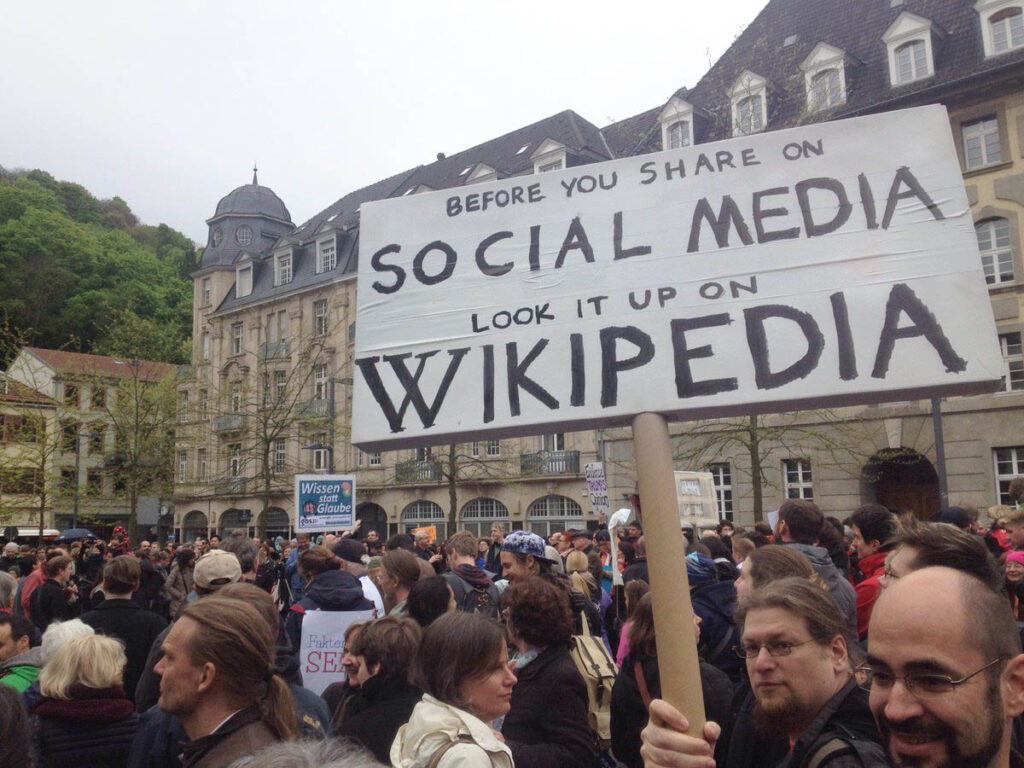
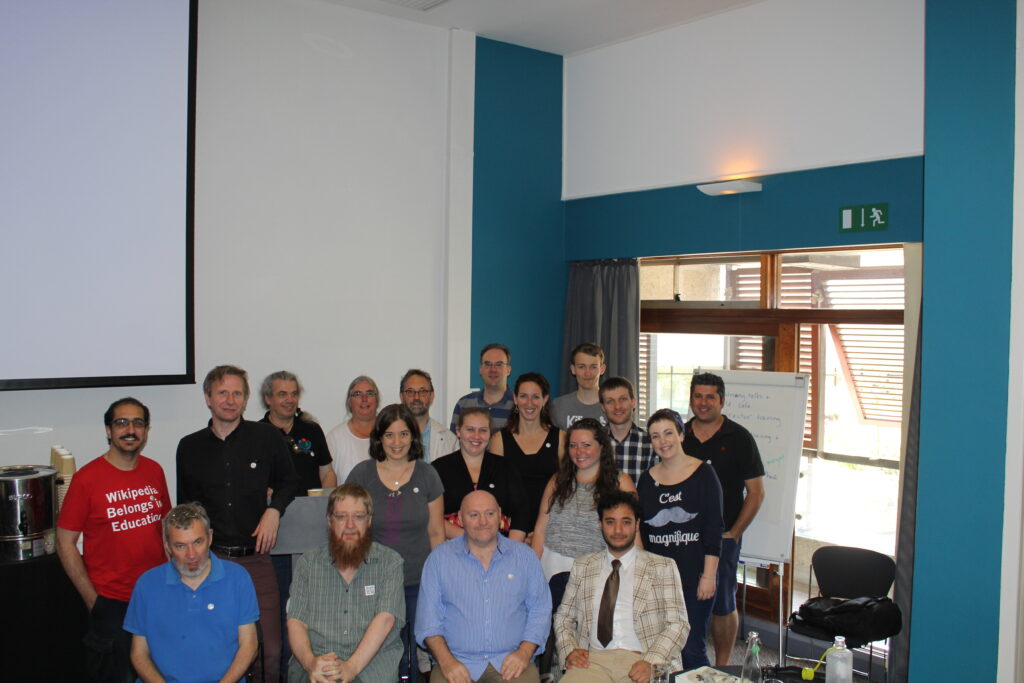
Wikimedia in HE
Since 2014, I have been at the forefront of integrating Wikipedia into undergraduate modules, pioneering assignments that challenge students to think critically, research effectively, and contribute meaningfully to open knowledge. My work emphasises the vital role of Wikimedia in Higher Education (HE), fostering digital literacy and collaborative writing while addressing systemic knowledge gaps. Through structured Wikipedia projects, students gain real-world publishing experience, ensuring their work has a lasting impact beyond the classroom.
Editing Project: The Women of Bletchley Park
A key highlight of my Wikimedia work has been the Women of Bletchley Park editing project, which directly tackles Wikipedia’s gender gap. By focusing on the extraordinary yet often overlooked contributions of the women codebreakers of World War II, students develop their research and writing skills while bringing visibility to historically marginalised figures. This initiative has led to the creation and improvement of numerous Wikipedia articles, ensuring that the vital intelligence work of Bletchley Park’s women is recognised in the digital sphere.
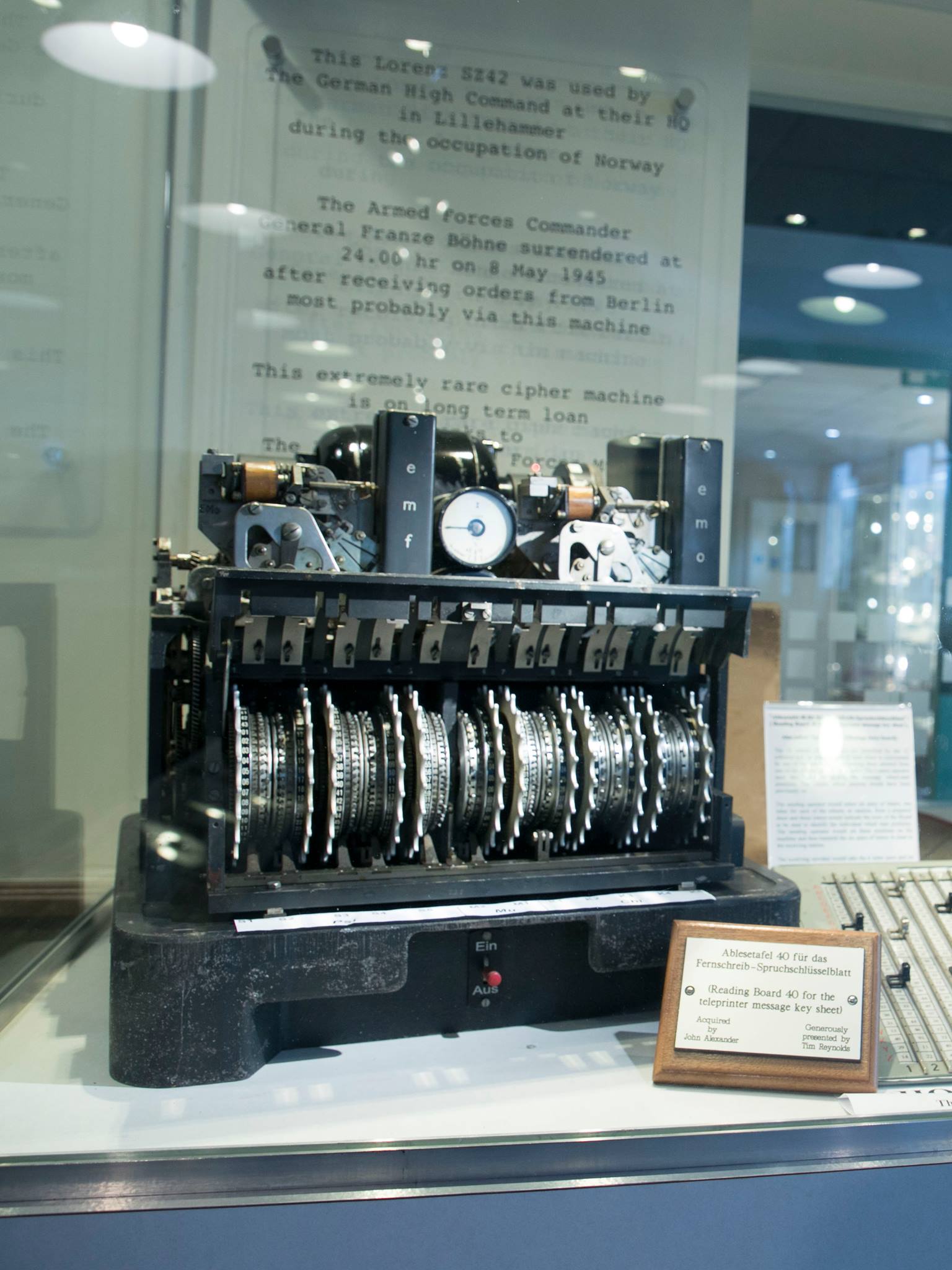
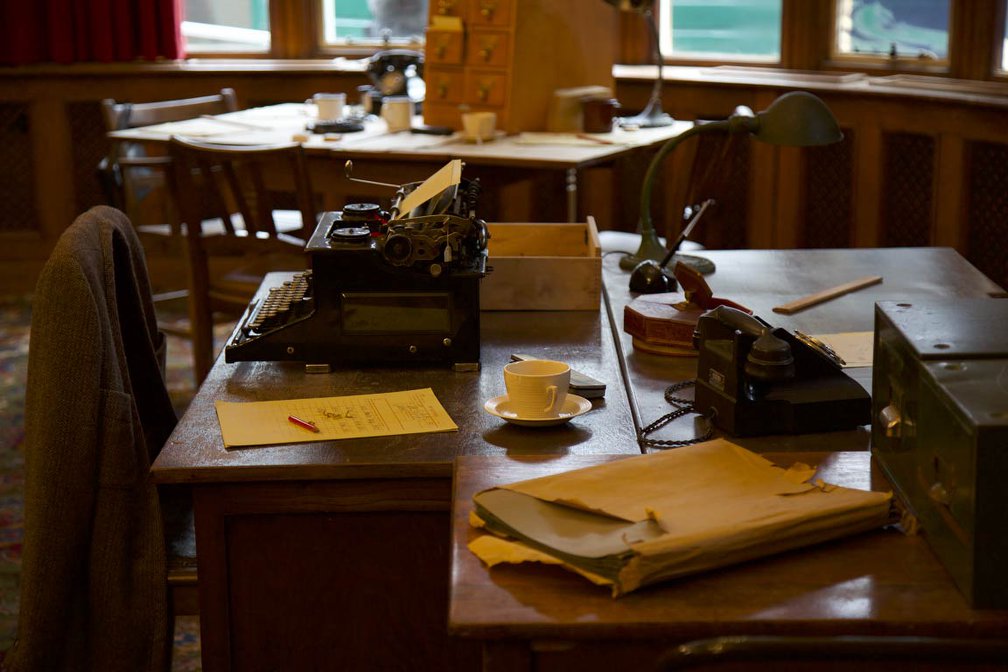
Wikimedia UK Education Summit 2017
As the host, co-organiser, speaker and contributor at the Wikimedia UK Education Summit 2017, I shared insights on the pedagogical impact of Wikipedia assignments, highlighting their role in developing students’ critical thinking and information literacy. This event brought together educators, researchers, and Wikimedians to explore the intersection of open knowledge and academia. My focus on digital humanities and gender representation in Wikipedia editing resonated strongly, reinforcing the importance of integrating Wikimedia projects into curricula to cultivate informed, active contributors to global knowledge networks.
Wikipedian-in-Residence
My involvement as a Wikipedian-in-Residence (WiR) at the Museum of Domestic Design & Architecture (MoDA) has further expanded Wikipedia’s reach in academic and cultural institutions. This role has allowed me to bridge the gap between archival collections and digital accessibility, ensuring that historically significant content is not only preserved but actively shared with the public. Through collaboration with Middlesex University and Wikimedia UK, I have facilitated knowledge-sharing initiatives that empower students and researchers alike. The WiR position underscores the transformative potential of Wikimedia projects in democratising access to history and fostering a more inclusive representation of the past.